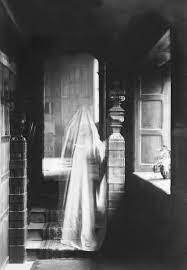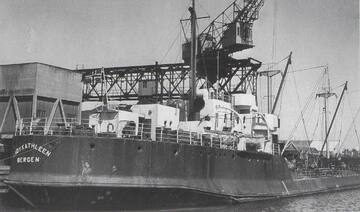Karinio paveldo turizmo istorijos
Pasakojimai, asmeniniai prisiminimai ir liudijimai apie karinio paveldo vietas ir jų istoriją. Šie pasakojimai gali būti apie vietą, kurią galima pamatyti, tokiu atveju ji pažymėta žemėlapyje kartu su kitomis karinio paveldo vietomis. Taip pat gali būti pasakojimai apie vietas, kurių nebegalima rasti. Jos žemėlapyje nepažymėtos.
Pastaba: nebūtinai visos istorijos susijusios su istoriškai patvirtintais faktais. Jos paremtos asmeniniais žmonių prisiminimais, patirtimi ir istorinių įvykių supratimu.
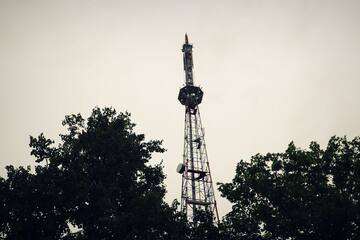
Apie buvusį Upīškalno karinį objektą
Valdžio Pigožnio prisiminimai apie Upīškalno karinę bazę „Upīškalno“ operacijos metu
(Pigožnis buvo buvęs Kurmalės parapijos seniūnas)
Apie Praną Belecką-Malūnininką ir lemtingą mūšį prie Gudų malūno
Pranas Beleckas-Malūnininkas, buvęs Lietuvos kariuomenės puskarininkis, išgarsėjo kaip drąsus Žemaičių apygardos Šatrijos rinktinės Vyčio būrio vadas, kurio vadovaujami partizanai surengė drąsų puolimą prie Gudų malūno.
Kodėl olimpinės žaidynės nevyko Latvijoje... arba povandeninių laivų remontas Daugavgryvoje, Baltijos karinio jūrų laivyno remonto dirbtuvėse
Kai Maskva 1980 m. ruošėsi vasaros olimpinėms žaidynėms, kilo klausimas, kur rengti buriavimo varžybas? Pasirodo, iš pradžių pasirinkimas teko Rygai, nes Rygos įlankoje yra idealios sąlygos buriuoti, o miestas taip pat senas ir gražus, dėl to nebus gėda. Tačiau kai kurie Rygos gyventojai dar prisimena arba jaunesnė karta internete yra skaitę, kad Ryga „neva... atsisakė šios aukštos garbės ir todėl varžybų organizavimas buvo perkeltas į Piritą, Talino priemiestį. Estai gavo didžiulį finansavimą ir pasistatė naują ir modernų buriavimo bei poilsio kompleksą, kuriuo po olimpinių žaidynių pabaigos nė vienas latvis nenuėjo pasigrožėti... Tačiau dabar paaiškėjo vienas įdomus niuansas – tapo žinoma, kodėl Ryga atsisakė šios garbės...
Mūšiai Kiubasarėje
1941 m. surengus platų desantinį išsilaipinimą iš žemyno į Muhu pakrantę, vokiečiai išsilaipino ir pietrytinėje Saremos dalyje.
Pirmojo pasaulinio karo apkasai prie Mažojo sąsiaurio
Karas salose prasidėjo 1917 m. rugsėjo 29 d., kai vokiečių armija išsilaipino Saremos saloje netoli Tagalahe.
Aptarnavimas Mõntu baterijoje Nr. 458
Baterijoje tarnavusio kareivio prisiminimai
Minos, bombos, torpedos ir cheminiai ginklai Baltijos jūroje
2010 m. vasario pradžioje Švedijos televizijos kanale SVT pasirodė žinia, kuri daugelį šokiravo ir giliai nustebino.
Dviejų karių pabėgimas iš Lenkijos kariuomenės nelaisvės
Atsiminimuose perteikiamos Lietuvos ir Lenkijos karinių dalinių kautynės, nelaisvės bei pabėgimo iš jos patirtys. Atsiminimų autorius nėra žinomas, tačiau istorija išsiskiria tarp Lietuvos karių patirčių nepriklausomybės kovose.

Apie nacionalinį patriotą pirmąjį leitenantą Vilį Gelbį
Pulkininko leitenanto Vilio Gelbės (1890–1919) likimas atspindi sunkią situaciją kuriant mūsų valstybę ir kariuomenę, taip pat šių įvykių vertinimą.
1918 m. lapkričio 18 d. paskelbus Latvijos valstybę, prasidėjo Latvijos nepriklausomybės karas ir ginkluotųjų pajėgų kūrimo darbai. Pirmosiose Latvijos savanorių kareivių gretose buvo Kurše gimęs jūrų leitenantas Vilis Gelbė.
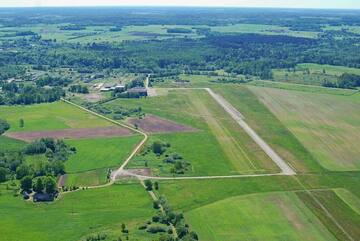
Cīravos aerodromo istorija
Cīravos aerodromas – įkurtas Antrojo pasaulinio karo metu, sovietų naudotas kaip DOSAAF aerodromas, šiuo metu naudojamas žemės ūkio reikmėms ir pramoginėms kelionėms, o angare galima apžiūrėti sovietmečio orlaivius.
Ištrauka apie Saksų savanorius iš gen. V. Grigaliūno Glovackio atsiminimų
Atsiminimuose aprašomas epizodas iš nepriklausomybės kovų, kuriuose parodomo Lietuvos kariuomenės ir Saksų savanorių santykiai.
Pergalės altoriaus Aidu istorija
Aidu Nepriklausomybės kovų Pergalės aukuro sunaikinimo ir jo liekanų istorija.
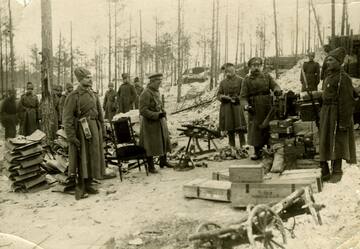
Apie kalėdines kovas
Kalėdų mūšiai baigėsi sausio 11 d. Latvijos šauliams trečiąją mūšio dieną pavyko užimti gerai įtvirtintą vokiečių armijos poziciją – Ložmetējkalnu. Kalėdų mūšių kaina buvo labai didelė. Šimtai Latvijos ir kitų Rusijos armijos kareivių žuvo bandydami išstumti vokiečius iš jų pozicijų. Pasakotojas vaizdžiai aprašo mūšio lauko scenas pasibaigus Kalėdų mūšiams.
Aviatoriaus Utočkino skrydžiai Tartu
Pirmieji skrydžiai Estijos padangėje – piloto Utotškino skrydis virš Radio 1912 m.
Ruhnu švyturio legenda
Gamykloje pagamintos švyturio konstrukcinės detalės laivu buvo gabenamos į Ruhnu salą.
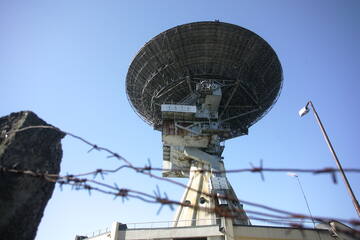
Irbenės radijo teleskopų pažeidimai
Prieš palikdama Irbenę, sovietų armija sugadino visas radijo teleskopų sistemas.
Žmogus, gelbėjęs persekiojamuosius
Bronius Gotautas, žmonių vadinamas Broliuku, Antrojo pasaulinio karo metais ir pokaryje rizikavo gyvybe gelbėdamas persekiojamus žmones - tiek žydus, tiek lietuvius nacionalistus, tiek rusų kareivius.
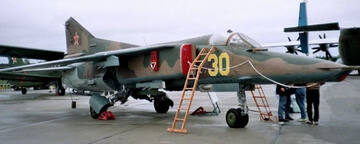
Mig-27D lėktuvas sudužo Zvārdės poligone ir Ledurgoje
1992 metų pradžioje tą pačią dieną, 40 minučių skirtumu, paslaptingomis aplinkybėmis Zvārdės poligone ir Lēdurgose sudužo du sovietinės gamybos rusiški „karo“ lėktuvai.
Justino Lelešiaus Grafo atsiminimai apie partizanų slėptuvės aptikimą ir sunaikinimą
Pasakojama, kaip stribai ir MGB‘istai pokario metais aptiko partizanų bunkerį ir likvidavo viduje besislėpusius partizanus.
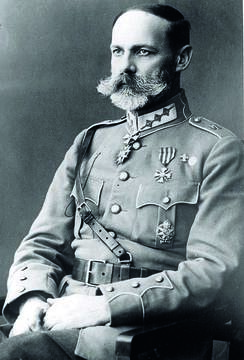
Apie generolą Karlį Goppersą
Generolas K. Goppersas (1876–1941) buvo iškilus kareivis ir iškili asmenybė. Jis pasižymėjo kaip sėkmingas vadas, vadovavęs batalionams ir pulkams, didvyriškai vadovavęs savo šauliams kovose už Latvijos laisvę Pirmojo pasaulinio karo (1914–1919 m.) metu. Jis dalyvavo mūšiuose prie Tyreļpurvos, Ložmetējkalno ir ginant Rygą.
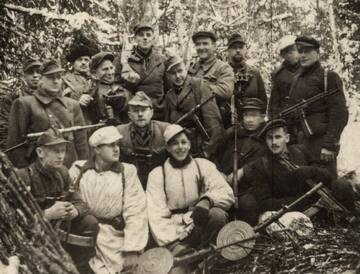
Peterio Cheeverso grupės veikla ir sunaikinimo istorija
P. Čeversas aplink save subūrė buvusius legiono karininkus, taip pat priėmė į grupę Kuržemės gyventojus. Visi jie pasirinko likti ištikimi laisvos ir nepriklausomos Latvijos valstybės idėjai, o ne pasiduoti okupacinei užsienio valdžiai. Čeverso grupė dislokavosi Talsų rajono Vandzenės - Upesgryvos - Oktės valsčių teritorijoje, stengdamasi išvengti frontalinių susidūrimų su Čekos kariais ar naikintojų batalionų kovotojais.
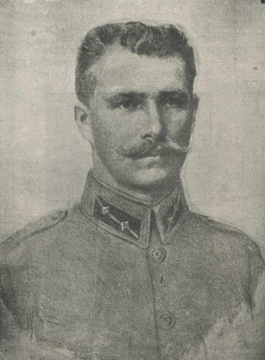
Oskaro Kalpako atminimui
Oskaro Kalpako atminimas saugomas daugelyje vietų – tai liudija jo gimtieji Liepsalu namai, paminklas Visagalos kapinėse, minėjimo renginiai ir gražūs koncertai kovo 6 d., Meirānu Kalpako pradinė mokykla, gatvės Lubanoje, Madonoje ir kituose miestuose ir taip toliau. Tačiau šiame straipsnyje – apie Oskaro Kalpako atminimo išsaugojimą gimtajame krašte XX a. 3–4 dešimtmečiais.
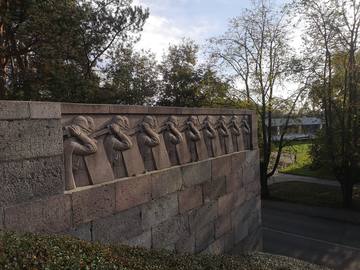
Apie Sidabrinio kalno atidarymo ceremoniją
Ištrauka iš prisiminimų istorijos iš generolo Jāņo Baložo kalbos Sudrabkalninio paminklo atidengimo dieną. Visas tekstas yra atidarymo renginio atpasakojimas, prezidento Kārlio Ulmanio ir generolo Jāņo Baložo kalbos. Prisiminimai pasirinkti, nes juose vaizdingai matyti Sudrabkalnino apylinkėse kovojančios Latvijos kariuomenės būklė.
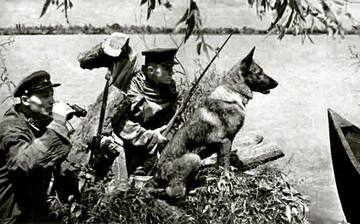
Kuržemės pakrantė – uždara zona
Šaltojo karo metu visa Kuržemės pakrantė buvo uždara zona visuomenei – čia pagrindinius sprendimus priėmė sovietų pasieniečiai, turintys sargybos postus tam tikru atstumu ir stebėjimo bokštus su prožektoriais paplūdimyje. Civiliai asmenys pajūryje buvo leidžiami tik dienos šviesoje.
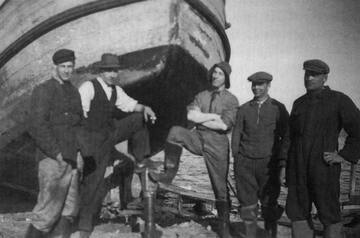
Pabėgėlių perkėlimo valtimis punktas iš Kuržemės pakrantės į Švediją prie „Pāžių“ namų
Viena iš svarbių perkėlimo vietų buvo netoli „Pāžių“ namų, kur dabar pastatytas paminklas – „Vilties burė“. „Laivai reguliariai atplaukdavo ir daugiausia žmonių išvykdavo iš „Pāžių“, – sako I. Freibergo prisiminimai.
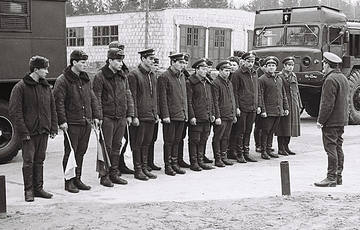
SSRS armijos bazė Marcien mieste
Baltijos šalys buvo viena svarbiausių Sovietų imperijos gynybos linijų, vakariausias bastionas, todėl kariuomenės koncentracija ten buvo milžiniška. Manoma, kad tuo metu Latvija buvo labiausiai militarizuota teritorija pasaulyje. Tikslus kariškių skaičius nežinomas, skirtingi šaltiniai skirtingais laikotarpiais mini nuo 200 000 iki 350 000. Vien Latvijoje per 50 metų buvo dislokuoti 3009 kariniai daliniai daugiau nei 700 vietų. Viena iš šių vietų buvo SSRS kariuomenės bazė Mārcienėje.

Sovietų Sąjungos didvyrio žygdarbis - 8-ojo Estijos korpuso leitenantas Jakobas Kunderis
Žuvusio 8-ojo Raudonosios armijos Estijos šaulių korpuso karininko Jakobo Kunderio didvyriški veiksmai užtikrino sėkmingą bataliono puolimą, tačiau jis pats žuvo, o jo žūties vietoje Jakobui Kunderiui pastatytas paminklas, o Tuškio brolių kapinėse – paminklas.
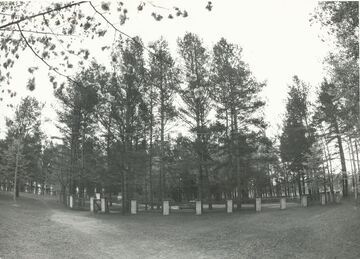
2500 nelaimingų sielų gyvenimą baigusių Mažeikiuose
1941 m. liepos pabaigoje Mažeikiuose prasidėjo masinės žydų žudynės, kurias pradėjo vokiečiai, o vėliau tęsė vietos baltaraiščiai. Žmonės buvo vedami grupėmis į žydų kapines, verčiami nusirengti ir sušaudomi prie iškastų duobių. Per kelias dienas nužudyta daugiau kaip 2 000 žydų iš Mažeikių ir aplinkinių miestelių.
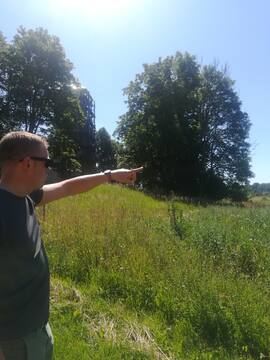
Grieze stovykla 1945 m. – vieta, kur susipynė likimai
Istorikas Roberts Sipenieks pasakoja apie radinius Griezės filtracijos stovyklavietėje
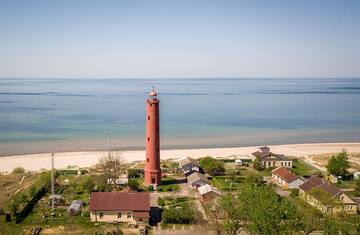
Draudžiami švyturiai ir pakrantė
SSRS laikais Šiaurės ir Vakarų Kuržemės pakrantė iš tikrųjų buvo karinė zona, uždaryta visuomenei, tačiau buvo draudžiama lankytis švyturiuose ar net fotografuoti.
Latvijos prekybinių laivų nuskandinimas Talino evakuacijos metu Antrojo pasaulinio karo pradžioje
Vokiečių pajėgoms sparčiai artėjant prie Talino, buvo surengta didžiulė jūrų operacija Talinui evakuoti. Šios operacijos metu daugybė laivų ir jų įgulų, taip pat laive buvę žmonės, žuvo minų laukuose, oro atakose ir pakrantės artilerijos ugnyje.
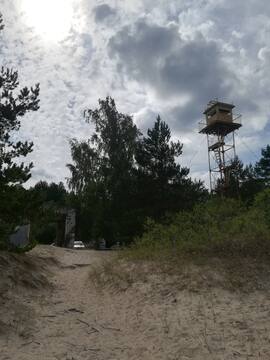
Šnipo pėdomis
Žmonių atmintis kartais būna gana trumpa. Dabar, kai visi gali eiti ir eiti, kur nori, daugelis verkšlena dėl prarastos pigios dešros, bet jie jau pamiršo, kad tiesiai už Mērsrago, priešais kelią, dažnai nusileisdavo dryžuota bomba ir ginkluoti rusų kareiviai, vadinami pasienio sargybiniais, juos praleisdavo tik su parašytais ir antspauduotais leidimais. Ir ne bet kuris Latvijos SSR gyventojas galėjo gauti leidimą, o tik tie, kurie pirmiausia buvo gavę vadinamąjį Rojos arba Kolkos kaimo tarybos šaukimą, kurio pagrindu po dešimties dienų savo milicijos dalinyje galėjo (arba negalėjo) gauti vizą atvykti į draudžiamą pasienio zoną. Aš buvau nusipirkęs namą šioje nelaimingoje Kuržemės pakrantėje, todėl kiekvieną pavasarį man ir mano šeimos nariams tekdavo melstis ir nuolankytis, kad valdžia atnaujintų leidimą atvykti.
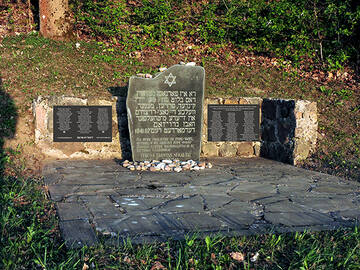
Platelių žydų tragedija
Platelių miestelio Jazminų kalne 1941 m. liepos mėnesį buvo nužudyti 30 vietos žydų, o vieta vėliau tapo atmintina dėl tragiškų čia nutikusių įvykių.
Lemtingas posėdis bunkeryje: 1949 m. Lietuvos partizanų vadų suvažiavimas
1949 m. vasario 10-20 dienomis Radviliškio rajono Minaičių kaimo Miknių sodybos bunkeryje įvyko vienintelis partizanų vadų suvažiavimas okupuotoje Lietuvoje, kurio metu buvo įkurtas Lietuvos laisvės kovos sąjūdis (LLKS) ir paskelbta Nepriklausomybės deklaracija.
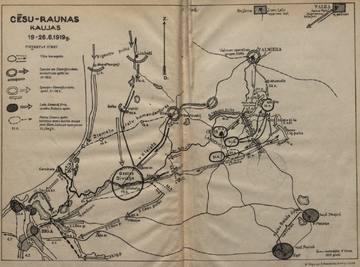
Cėsių mūšio pradžia, eiga ir pabaiga
Pergalė Cėsių mūšyje turėjo tapti lūžio tašku Latvijos ir Estijos kovoje už savo šalies nepriklausomybę. Ši pergalė sustabdė Andrijevo Niedros vyriausybės ir vokiečių generolo Rüdigerio fon der Golco planus užkariauti Pabaltijį. Vietoj to, Liepojoje savo veiklą atnaujino Karlio Ulmanio vadovaujama Laikinoji Latvijos vyriausybė.
Pietų Estijos išvaduotojų paminklas
Memorialui pagaminti naudotų medžiagų ir išlaidų sąrašas.
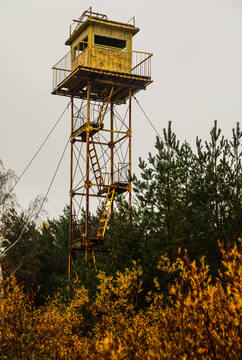
„Atgal į Mazirbę“ (fragmentas)
Aštrus įvykis iš Vilnio Blumbergo gyvenimo, kai jis atvyko į Mazirbę aplankyti tetos, virto nemaloniu nesusipratimu su sovietų pasienio apsaugos pareigūnais ir atšiauria žiemos naktimi.
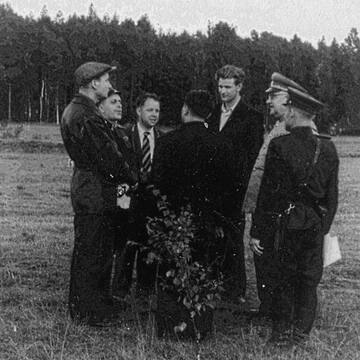
SSRS dvigubas agentas – Edvīns Ozoliņš pravarde „Pilotas“
Šaltojo karo žvalgybos ir kontržvalgybos mūšiuose tarp Vakarų ir SSRS dalyvavo abiejų pusių agentai ir dvigubi agentai. Nuo 1920-ųjų sovietų saugumo tarnybos sukūrė visiškai naują režimo apsaugos priemonę: dezinformaciją. Šis terminas Vakaruose anksčiau nebuvo žinomas.
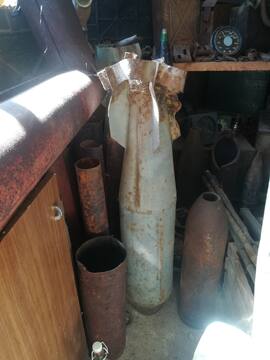
Šmeižikiško vaikystė bombų sprogimų šešėlyje – fosforo kapsulės
Vaikystę praleidau netoli Zvārdės poligono, girdint sprogimų ir skraidančių reaktyvinių lėktuvų garsus, tačiau savaitgaliais vis tiek kartais pavykdavo patekti į poligoną. Pasitraukus sovietų armijai, žemė buvo nusėta bombų krateriais ir daugybe sprogstamųjų objektų ne tik iš poligono laikų, bet ir iš Antrojo pasaulinio karo. Berniukai ypač mėgo deginti fosforo kapsules...
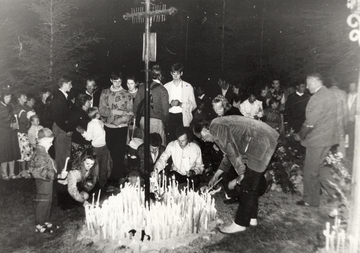
Rainių žudynės: NKVD nusikaltimas be liudininkų
1941 m. birželio 24-25 d. Rainių miškelyje, netoli Telšių, NKVD ir raudonarmiečiai ypatingai žiauriai nukankino 73 politinius kalinius iš Telšių kalėjimo - tai tapo vienu kraupiausiųjų sovietų nusikaltimų Lietuvoje.
Merkinės mūšis
Vienos didžiausių partizanų kautynių įvykusių Pietų Lietuvoje, kuomet buvo užimtas Merkinės miestelis.
Baterijos vado Aleksandro Stebelio likimas.
Legendinio baterijos vado, kapitono Aleksandro Stebelio, likimas gaubiamas paslapties.

Latvijos legiono 42-ojo pulko kuopos vado Vernerio Preijerio prisiminimai apie Kuršo mūšius.
Kuršo tvirtovė buvo suformuota po Rygos žlugimo 1944 m. spalio 13 d. ir Rusijos proveržio į Kaliforniją spalio 10 d., taip nutraukiant sausumos eismą su Vokietija.
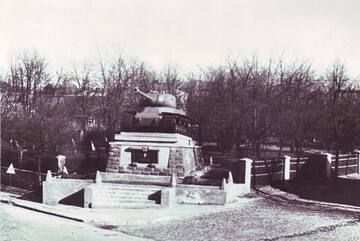
Salantų tankas
Pasakojama sovietinio sunkiojo tanko IS-2 istorija Salantuose nuo Antrojo pasaulinio karo įvykių iki jo tapsmo sovietinio memorialo elementu ir meninės erdvės (Orvidų sodybos-muziejaus) dalimi.
Pasakojimas apie Kalniškės mūšį
Pasakojama apie vienas didžiausių Lietuvos partizanų kautynių, pateikiamos kautynių priežastys, eiga ir pasekmės.
1944 m. vasaros pabaiga Kaune
Pasakojama apie Raudonosios Armijos priartėjimą prie Kauno ir Vokietijos kariuomenės pasitraukimą 1944 m. vasarą.
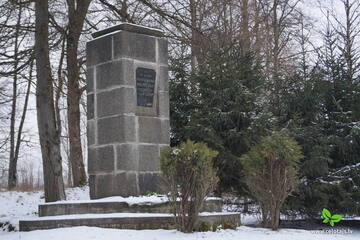
Oskaro Kalpako bataliono mūšis netoli Lielaucės
Sausio 15-osios naktį Kalpako batalionas kovojo pirmąjį mūšį Lielaucėje, atremdamas raudonųjų puolimą. Tai buvo pirmasis reikšmingas Kalpako bataliono mūšis, o pergalė suteikė kariams ypač stiprų moralinį postūmį.
Savanorio, jaunesniojo puskarininkio Zarankos prisiminimai apie Nepriklausomybės kovas
Jaunesnio puskarininkio Zarankos atsiminimuose rašoma apie kovas prieš bolševikus, lenkus ir bermontininkus. Atsiminimuose aprašomi kovos motyvai, daug dėmesio skiriama karo kasdienybės ir kovos veiksmų aprašymui.
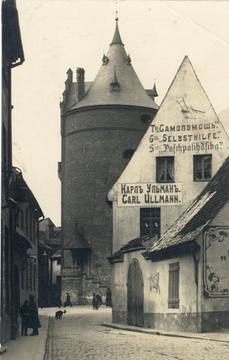
Karo muziejaus kūrimo pradžios prisiminimai
Pasakotojas aprašo aplinkybes, kuriomis buvo įkurtas Karo muziejus. Paminėtos problemos ir kolekcijų kūrimo darbai.

Pilsblīdenės mūšis Roberto Ancano atsiminimuose
Robertas Ancansas (1919 m. lapkričio 11 d. – 1982 m. sausio 1 d.) buvo Latvijos legiono karininkas, Geležinio kryžiaus riterio kryžiaus ordino savininkas, dalyvavęs Pilsbidenės mūšiuose 1945 m. kovo 16 ir 17 d. Šeštasis Kuršo mūšis jau tęsiasi ketvirtą dieną. Anzānsas tarnavo Pilsbidenės apylinkėse, todėl gerai pažinojo šią vietovę. Anzano divizijos kryptį vėl nukreipia dar vienas fronto lūžis – 8 km gylio Raudonosios armijos įsiveržimas. Šiuose mūšiuose Anzánas sužeistas.
Partizano Balio Vaičėno Pavasario laiškas
Partizano laiškas parašytas 1949 m. lapkričio 15 d., jis skirtas sesei ir ryšininkei Virginijai.

Tukumo aerodromo paslaptis
Tukumo aerodromas saugo paslaptį, kurios niekas dar neišaiškino – ar aerodromo teritorijoje tikrai yra branduolinės raketos branduolinė galvutė, kurią ten iškasė Rusijos armijos specialiosios tarnybos po to, kai aerodromas buvo apleistas 1990-aisiais?
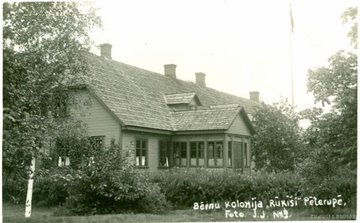
Apie vaikų kolonijos „Rūķīši“ įvykius prieškario ir Antrojo pasaulinio karo laikotarpiais
Vaikai buvo atimti iš partizanų rėmėjų šeimų. 1943 m. kovo mėn. Salaspilio stovykloje buvo 1100 vaikų. Apie 250 vaikų mirė nuo tymų, vidurių šiltinės ir kitų ligų, keli šimtai vaikų buvo perkelti į aplinkinių parapijų ūkius, o apie 300 vaikų atsidūrė vaikų namuose Rygos Jūrmaloje, Igatėje ir Saulkrastuose.
Saulkrastuose vaikai atsidūrė Latvijos vaikų pagalbos draugijos vaikų kolonijoje „Rūķīši“.

Kaip Latvijos valdžios pareigūnai apgavo Pampalių bolševikų šalininkus
Buvęs Pampalių mokyklos direktorius (iki 1959 m.) Alfrēdsas Brūnas asmeniškai surinko įspūdingą knygą apie Pampalių mokyklos istoriją ir su ja susijusius istorinius įvykius su autentiškomis nuotraukomis. Knygoje A. Brūnas aprašo Nepriklausomybės karo įvykius Pampalyje, išsamiai aprašydamas įvykius, susijusius su Latvijos valstybės veikėjais, bolševikų rėmėjais, Vokietijos armijos veiksmais ir kt.
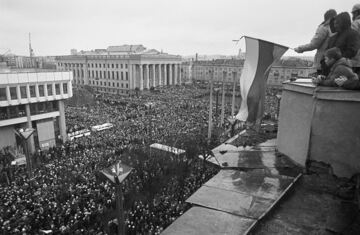
Sovietų agresija: 1991 m. sausio įvykiai ir jų liudininkai
Lietuvai teko kovoti už 1990 m. kovo 11 d. atkurtą Nepriklausomybę. Vyko neginkluotas pasipriešinimas, tačiau sovietiniai okupantai ir agresoriai prieš beginklius naudojo kariuomenę, šaunamuosius ginklus ir tankus. 1991 m. sausį sovietų vadovybė ir kariuomenė pradėjo vykdyti planą, skirtą Lietuvos Nepriklausomybės sunaikinimui. Pradėtas valstybinis perversmas. Lietuvos žmonės atsilaikė prieš sovietinę imperiją.
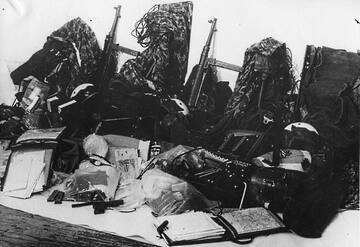
Alfredas Riekstinas, pravarde „Imants“, žuvo dėl sovietų dvigubo agento išdavystės.
Latvijos legionierius Alfredas Riekstinas po Antrojo pasaulinio karo buvo užverbuotas dirbti JAV žvalgybos agentūroje CŽV.
Prano Čėsnos pasakojimas apie brolio stojimą į partizanų gretas
Pasakojama apie pokario metų situaciją Lietuvos kaime ir apsisprendimą tapti partizanu.
Undvos karinė bazė
1940 m. rugpjūčio 22 d. Tagamõisos pusiasalyje buvo skirta 594 hektarų žemės sovietinės karinės bazės Nr. 32 (Undva) statybai.
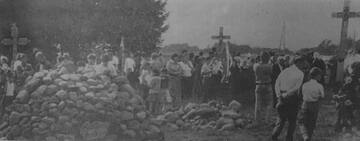
Šaltinis: Gyvieji Baltijos kelio liudijimai
Žurnalistų akimis pasakojama apie 1989 m. vykusio Baltijos kelio dalyvių įspūdžius ir emocijas, apie bendras lietuvių ir latvių tos dienos patirtis.
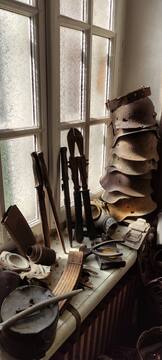
Apie rastus karo artefaktus
Šiuolaikinėje Latvijoje įvairių muziejų kolekcijas papildo ir asmeninės privačių asmenų kolekcijos, kurios dažnai eksponuojamos viešai ir yra prieinamos visiems. Daugelis žmonių turi pomėgį seniems daiktams, įskaitant su karo istorija susijusius daiktus. Dažnai lankytojai nė nenutuokia apie šių daiktų kilmę. Ar jie atsirado staiga? Visais atvejais tai kelių metų darbas ir įdomi, asmeniška istorija apie vieno žmogaus pomėgį kolekcionuoti daiktus, siekiant iš jų sukurti, pavyzdžiui, muziejų. Pasakotojas aprašo savo asmeninę patirtį, suteikdamas skaitytojui supratimą apie situaciją Latvijoje po Antrojo pasaulinio karo. Įvairių armijų paliktas palikimas ir reikalingų žaliavų trūkumas ūkyje verčia žmones ieškoti kūrybiškų būdų, kaip panaudoti praktiškai bet ką, kad išgyventų. Laikui bėgant, tai, kas ūkyje nebenaudinga, tampa vertingais, istoriniais eksponatais, pasakojančiais apie Latvijos ir jos žmonių patirtį.
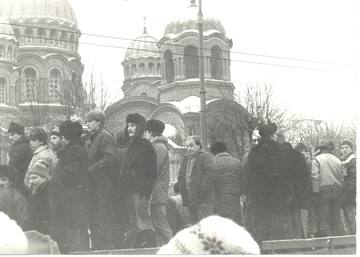
Vaidaviečiai ant barikadų
2020 m., artėjant 1991 m. barikadų 30-mečiui, Vismants Priedīte pasakoja apie vietos gyventojų dalyvavimą šiuose istoriniuose įvykiuose.
Naktinis Tehumardi mūšis
Spalio 8-osios vakarą, tamsoje, netoli Tehumardi kaimo susitiko artėjantys sovietų ir besitraukiantys vokiečių kariai.
Viena diena partizanų bunkeryje
Partizano Liongino Baliukevičiaus Dzūko dienoraštyje rašoma apie gyvenimą partizanų bunkeryje, šiame pasakojime atskleidžiama, kaip atrodė viena partizanų diena.
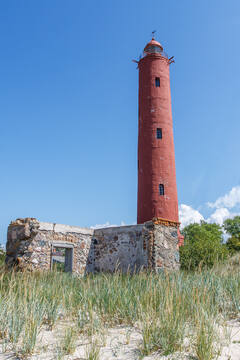
"Latvijos SSR AE bus čia!"
Andrio Zaļkalno (g. 1951 m., Vērgalės kaimo Liaudies deputatų tarybos pirmininko (1982–1989 m.)) prisiminimai apie laiką, kai Akmeņrage beveik buvo statoma atominė elektrinė.
Slaptas veterinaras
Veterinarijos gydytojas Stanislovas Mikašauskas, dirbęs Plokštinės karinėje bazėje, dalijasi prisiminimais apie neįprastą patekimą į bazės teritoriją ir griežtą paslapčių saugojimą net ir neformalioje aplinkoje.
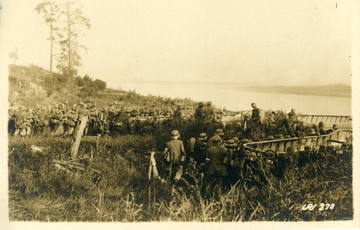
Mažosios Juglos upės mūšis / Rygos operacija
Pasakotojas aprašo savo įspūdžius apie Rygos operacijos pradžią, kai vokiečių armijos artilerija pradeda apšaudyti Rusijos armijos pozicijas. Jis aprašo Rusijos armijoje tvyrantį chaosą ir Latvijos šaulių nuotaikas prieš mūšius.
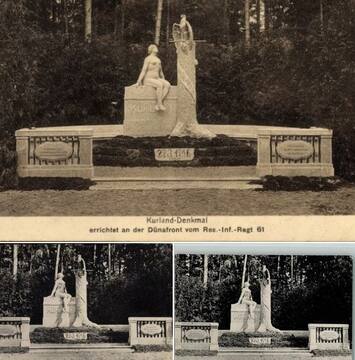
Kuršo (Motinos) paminklas
Moters formos paminklas, kurį Pirmojo pasaulinio karo metu pastatė vokiečių armija
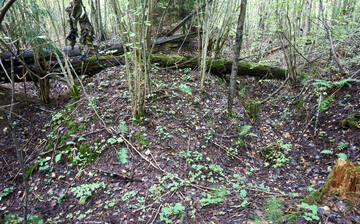
Dėl vietovardžių suteikimo karo metu
Kai kariuomenei užimdavo kokią nors teritoriją, ne visada pavykdavo sužinoti konkrečių namų, kaimelių ar kaimų pavadinimus. Vietos gyventojai buvo evakuoti ir nebuvo ko paklausti, todėl vokiečiai buvo linkę vietovėms suteikti savo pavadinimus. Išliko pasakojimas apie namą Viliškuose. Savo atsiminimuose pionierių kuopos vadas pulkininkas leitenantas Kochas, lankęs atsargos karininkų kursus, rašo, kad vienas iš artilerijos dalinių buvo dislokuotas netoli namo.
Kruvinos grindys Telšių KGB rūsyje
Telšių KGB kalėjimo kalinių prisiminimai atskleidžia siaubingas kalinimo sąlygas - nuo fizinių kankinimų iki nežmoniškų gyvenimo sąlygų perpildytose kamerose.
Avinurmės mūšis
Apie Lohusu mūšį Estijos nepriklausomybės karo metu ir jame dalyvavusius vyrus bei ginkluotę.

Selio miško brolių gyvenvietė Sūpės pelkėje
Sūpės pelkė siejama su nacionalinių partizanų gyvenviečių ir mūšių vietomis, kurios susiformavo sąveikaujant žmonėms ir vietovėms. Ji aprašyta tremtinio latvių rašytojo Alberto Eglīčio baladėje apie įvykius jo gimtojoje Sūpės pelkėje „Samanose ir purve“ – duoklėje Sūpės pelkės partizanams:
... „1945 m., kai pelkėje švytėjo ruduo –
Pokļevinskio gimtadienio proga Lieljānis vakarienės metu dalijasi:
Gluosniuose fermentuotas alus,
Romulanai garbina sviestą,
Džiovinu mamos kmynų duoną,
Džiovintas kumpis kovo mėnesio gabalėliuose,
Ir Stučkos svogūnai,
Ildzeniecės sūris.
Kambariai dervingose sienose
Ir žaibas trenkė širdyse,
Ir vienuolikoje sielų merdi –
"Žemėje supuvusios šaknys..."
Ši praeities interpretacija su įvykiais po Antrojo pasaulinio karo apėmė žmonių liudijimus, dvasios išraiškas ir vertybių sistemas. Ji primena visuomenės paramą nacionaliniams partizanams, kurių okupacinė valdžia negalėjo taip lengvai nugalėti.
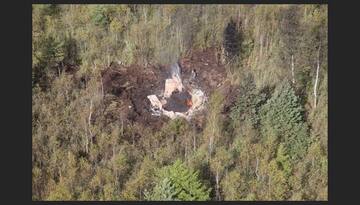
Zvardineikos vaikystė bombų sprogimų – numušto lėktuvo – šešėlyje
Sąvartynas buvo naudojamas iki 1992 m., o net 1992 m. kovo mėn. sąvartyno teritorijoje dėl nežinomų priežasčių sudužo iš Lielvārdės pakilęs lėktuvas.
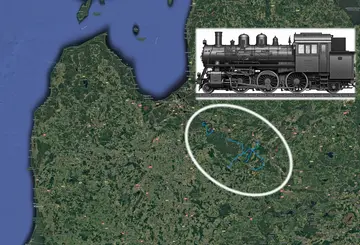
600 mm siaurojo geležinkelio Sėlijoje
Dažnai sakoma, kad karas yra visų dalykų tėvas, ir būtent taip buvo su Latvijos kaimo geležinkeliais. Bet kuriai armijai, puolančiai ar besiginančiai, reikia nemažų išteklių karo veiksmams užtikrinti. Kai 1915 m. Vokietijos armija įžengė į Latvijos teritoriją, ji susidūrė su tiekimo sunkumais. 1915 m. pabaigoje frontas stabilizavosi palei Dauguvos liniją. Istoriškai gyventojų tankumas Sėlijos teritorijoje buvo mažas, todėl nebuvo plataus transporto kelių tinklo.
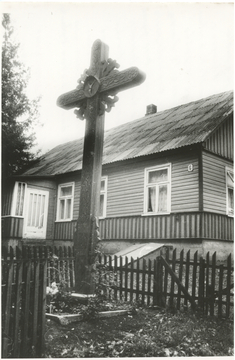
Paskutinė poeto kelionė
1944 m. spalio 7 d., tą pačią dieną, kai vyko Sedos kautynės, tragiškai žuvo jaunas poetas Vytautas Mačernis, bandęs pasitraukti į Vakarus.
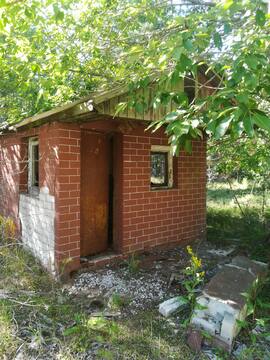
Krasnoflotskajos laiškų kratinys
Sovietmečiu buvo įdomių incidentų su „Krasnoflotskajos“ pavadinimu ir geografine vieta.
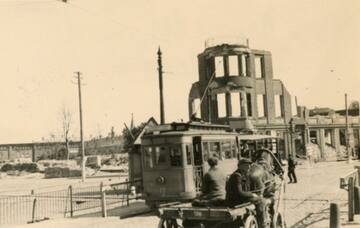
Liepoja – įvairių istorinių įvykių kryžkelėje
Liepojos gyventojai buvo vieni pirmųjų Latvijoje, patyrusių Antrojo pasaulinio karo protrūkį, ir vieni paskutiniųjų, kuriems karas baigėsi tiek tiesiogine, tiek simboliška prasme. Antrasis pasaulinis karas ir sovietų okupacija Liepojoje baigėsi tik 1994 m., kai iš miesto paliko paskutiniai SSRS įpėdinės Rusijos kariai.
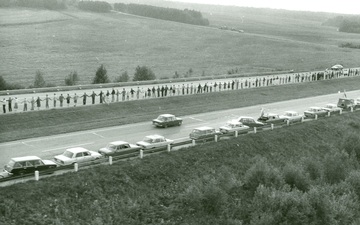
Baltijos kelias: atminčiai ir studijoms
1989 m. įvykęs Baltijos kelias, net ir prabėgus daugiau nei 30 metų po įvykio, nestokoja dėmesio. Statomi nauji paminklai, rengiami minėjimai ir parodos. Viena iš iniciatyvų – Baltijos kelio dokumentinio paveldo įtraukimas į UNESCO Pasaulio atminties tarptautinį registrą.

Edgaro Auninio, skridusio lėktuvu, prisiminimai apie Antrojo pasaulinio karo pabaigą Ezerės ežere
Ištrauka iš oro kapituliatoriaus Edgaro Aunino atsiminimų apie Kuržemės kapituliaciją 1945 m. gegužę
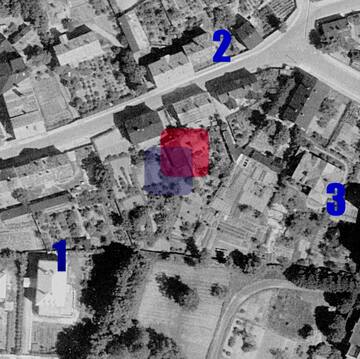
Incidentas Ormaņu gatvėje
Sovietų Sąjungos karinio sraigtasparnio katastrofa Rygoje, Agenskalne, Ormaņu gatvėje
Botaniko darbas pajūryje
Vykdydamas botaniko pareigas, jam buvo leista vaikščioti pakrante tik su pasienio sargybiniu.
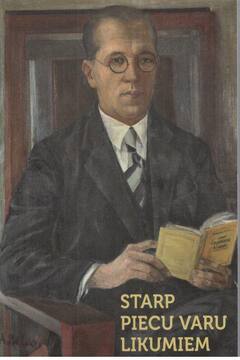
Jāņo Sūno prisiminimai apie laiką, praleistą Grieze filtravimo stovykloje
Advokatas Jānis Sūna savo autobiografinėje knygoje paskelbė prisiminimus apie laiką, praleistą Griezės filtracijos stovykloje.
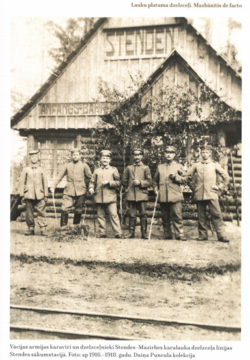
Svarbi Stendės stoties vieta Karalausko geležinkelio tinkle
Irbės sąsiaurio rajono mūšio lauko geležinkelių pagrindinė užduotis buvo aprūpinti Vokietijos armijos pakrantės gynybos pozicijas patrankomis ir amunicija.

Tervetės raketų bazė
Tervetės raketinė bazė buvo viena iš slaptų SSRS strateginių karinių bazių, kurioje buvo dislokuotos R12 balistinės raketos.
Nepatogus plk. V. Skorupskio liudijimas apie 1926 m. gruodžio 17 d. perversmą
1930 m. plk. V. Skorupskio Prancūzijos leidykloje Charles – Lavauzelle & Co išleista knyga „Karinių įvykių Lietuvoje liudytojo prisiminimai“, kurios šeštasis skyrelis skirtas gruodžio perversmui.

Paminklai Lietuvos Nepriklausomybei. Roberto Antinio sukurtų paminklų istorijos: (III) atgimimas
Viena iš Lietuvos Persitvarkymo Sąjūdžio epochoje besikeičiančios visuomenės apraiškų buvo ir 1988 m. prasidėjusios sovietmečiu sunaikintų Nepriklausomybės paminklų paieškos ir atkūrimas. Lietuvos miestuose ir miesteliuose vėl iškilo Nepriklausomybės, Laisvės ir Valstybingumo ženklai.
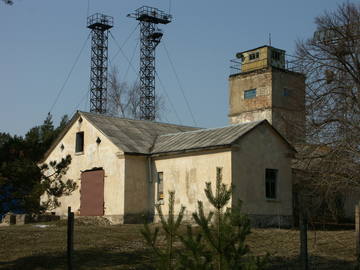
Kolkos kyšulio pasienio apsaugos apžvalgos bokštas
Sovietmečiu pasieniečiai iš šio bokšto stebėjo ir kontroliavo Irbės sąsiaurio vandenis, ir tais laikais buvo sakoma, kad net antis negalėjo perplaukti šio sąsiaurio be pasieniečių žinios.

Nuskendęs laivas Mangalsalos saloje
Sovietmečiu čia, karinėje zonoje, sudužo betoninis krovininis laivas „Lady Kathleen“, kurio liekanas vis dar galima pamatyti jūroje netoli kranto. Su juo vis dar siejami įvairūs mitai.
Povandeninių laivų prieplauka Alksnynėje
Menamas Sovietų Sąjungos laikų paslaptingas Kuršių nerijoje ties Alksnyne buvęs objektas. Linkstama jį laikyti sovietinių povandeninių laivų prieplauka ar tarpine stotele. Nors šiandien tikslius faktus sudėlioti sudėtinga, to krašto gyventojų atmintyje iškyla įvairių prisiminimų ir asociacijų.
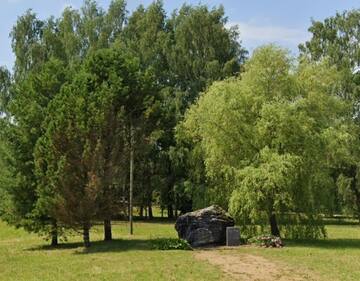
Čia gegužės 9 d. susitiko „Panfilovo divizija“.
Raudonosios armijos „Panfilovo divizija“ 1945 m. gegužės 9 d. buvo dislokuota netoli Pampalio. Divizijos štabas greičiausiai buvo įsikūręs Pampalio pradinėje mokykloje.
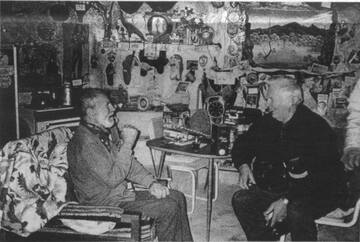
Susitikimas su Arvidu Blumenthalsu – Krokodilas Haris Kamberpedijoje
Laikraštis „Australian Latvian“ išspausdino straipsnį apie susitikimą su Arvīdu Blūmentālu jo namuose Australijoje.
(Trumpas epizodas iš kelionės link Australijos centro ir vakarinės pakrantės šaknų kartu su Aivaru ir Benita Browne.)
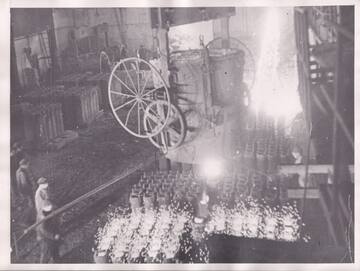
Papasakokite man apie nuskendusią įrangą
Latvijoje išliko daugybė pasakojimų apie pelkėse ir ežeruose nuskendusius techniką. Nedaug jų yra teisingi.

Dzelzkalnių mūšis Zūrių miške 1946 m. vasario 23 d.
1945/46 m. žiemą Žalvarinis pulkas praleido Zūrių miške, Dzelzkalnių apylinkėse, kur buvo pastatyti keli bunkeriai. Ten gyveno apie 40 partizanų. 1946 m. vasario 23 d. stovyklą apsupo SSRS vidaus reikalų kariuomenė ir įvyko įnirtingos kautynės.

Išdaigos ir žaidimai su karine amunicija
Po Antrojo pasaulinio karo Latvijos žemė buvo pilna fizinių karo liekanų. Tai buvo daugybė sviedinių, nesprogusių minų ir tiesiog šovinių. Net ir dabar, ypač tose vietose, kur vyko aktyvūs karo veiksmai, randama nesprogusių minų, o tai yra didelė retenybė, o pokario metais šie sviediniai buvo miškų ir net kiemų gyventojų kasdienio gyvenimo dalis, netgi vaikų žaislai.
Krakių bunkeris: dviejų partizanų žūties vieta
1951 m. sausio 7 d. Jonuškių miško bunkeryje žuvo du Žemaičių apygardos partizanai - Albertas Švažas-Vanagas ir Pranas Šiuipys. Po pusės amžiaus Mažeikių šauliai atstatė bunkerį ir įamžino kovotojų atminimą.

Apie Latvijos šaulius Olainės apylinkėse
Memuaruose atsispindi kasdienis Latvijos šaulių gyvenimas Olainės apylinkėse. Aprašomos ne tik gyvenimo sąlygos, bet ir jų įprasta užduotis – priešo pozicijų žvalgyba.

Visvalžo Brizgos (Kārļa kraujos) tautinių partizanų grupė
Jungtinė Latvijos ir Lietuvos nacionalinių partizanų grupė „Kārļa Krauja“ buvo viena didžiausių pasipriešinimo grupių Latvijos teritorijoje 1947–1949 m.

Ezeroje kilusio Jānio Miesnieko prisiminimai apie Antrojo pasaulinio karo pabaigą Ezeroje
Ezerės kultūros istorijos ir kraštotyros muziejus „Muitinė“ įsikūręs istoriškai reikšmingame pastate. 1945 m. gegužės 8 d. čia buvo pasirašytas Kuržemės fronte apsuptų nacistinės Vokietijos armijos dalinių kapituliacijos aktas.
Buvęs Ezeras gyventojas Jānis Miesnieks (gim. 1930 m.) dalijasi prisiminimais apie tos dienos įvykius.
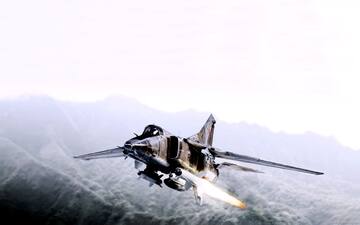
Rusijos kariniai lėktuvai sudužo Ledurgos ir Zvardės poligonuose
1992 metų pradžioje du sovietiniai Mig-27 D lėktuvai sudužo paslaptingomis aplinkybėmis, 40 minučių skirtumu, Lēdurgos ir Zvārdės poligonuose.
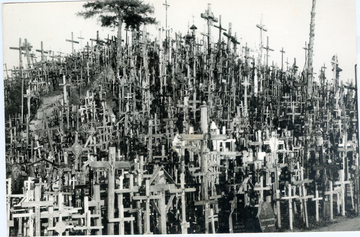
Kryžių kalno griovimas: aktyviausio naikinimo liudijimas
Sovietmečiu Kryžių kalnas sovietinės valdžios buvo ne kartą naikinamas, vienas iš organizuotų griovimų įvyko XX a. antroje pusėje, kai partijos nurodymu buvo sutelkta apie 300 vyrų šiam darbui atlikti, o procesas buvo kruopščiai suplanuotas ir koordinuotas.
Laiką leidžiu prie jūros.
Edgaras Hausmanis, beveik visą gyvenimą praleidęs savo šeimos namuose Vaidės kaime „Purvziedi“, pasakoja apie gyvenimą Baltijos jūros pakrantėje įvairiais laikais. Edgaras turi ką prisiminti, o mes turime iš ko pasimokyti.
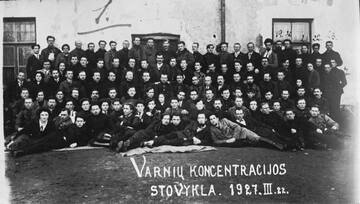
Varnių stovykla: kur komunistai ir krikščionys demokratai žaidė šachmatais
1926-1931 metais veikusi Varnių koncentracijos stovykla tapo ypatinga vieta, kur kartu kalėjo komunistai, krikščionys demokratai ir net smulkūs chuliganai - visi, kas galėjo kelti grėsmę Smetonos režimui.
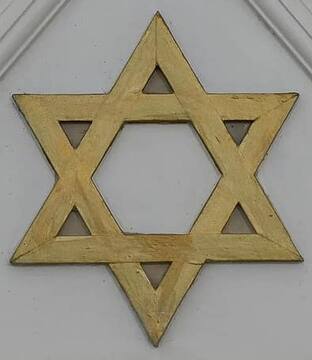
Dovydo žvaigždė Dundagos koncentracijos stovyklos memorialinėje vietoje
Atgavę nepriklausomybę, Dundagos gyventojai žydų žudymo ir perlaidojimo vietoje prie Mazirbės–Dundagos kelio pastatė didelę medinę Dovydo žvaigždę, o vėliau Latvijos žydų kongregacijų ir bendruomenių taryba šalia jos taip pat atidengė atminimo akmenį.
Šilėnų bombardavimo poligonas
Tarpukariu Šilėnų pelkėtoje vietovėje prie Šiaulių veikė bombardavimo poligonas, kuriame buvo vykdomi Lietuvos karo aviacijos bombų mėtymo ir šaudymo pratimai. Iki šių dienų išlikę betoniniai stebėjimo bokšteliai primena šio poligono egzistavimą.

Prožektorių dekoracija Medumose
1915 m. rudenį fronto linija stabilizavosi. Rusijos imperijos armijos pozicijos praėjo per Medumį. Medumyje taip pat buvo dislokuota 250-oji prožektorių kuopos divizija. Tiksli šios divizijos vieta Medumio kaime nustatyta.
Pasipriešinti sovietams: laisvo žodžio sklaida
Nusileidusi Šaltojo karo ir sovietinės kontrolės uždangos visgi nesugebėjo visiškai užkirsti iš Vakarų sklindančių radijo stočių transliacijų. Su jomis okupuotą Lietuva pasiekdavo ir laisvesnis žodis. Tai buvo viena iš nedaugelio spragų, galėjusių prasiskverbti pro sovietinės kontrolės, ideologijos ir propagandos uždangas. Sovietai metė daug pastangų ir resursų šioms transliacijoms slopinti ir trikdyti.

Anšlavo Eglīčio prisiminimai apie Latvijos nepriklausomybės karą ir 1919 m. įvykius Alūksnėje
1919 m. kovo 27 d. 1-asis Valmieros pėstininkų pulkas kartu su Talino (tuometinio Rėvelės) ir Tērbato Estijos gvardijos (kaitselit) batalionais bei trimis šarvuočiais traukiniais pradėjo Latvijos išlaisvinimą nuo bolševikų nuo Melnupės upės krantų.
Latvija ir Estija stato modernius povandeninius laivus
Latvija ir Estija savo karinėms pajėgoms sustiprinti renkasi naujus ir modernius ginklus – Prancūzijoje ir Didžiojoje Britanijoje pagamintus povandeninius laivus. Du Latvijos karinio jūrų laivyno povandeniniai laivai vėliau nedalyvavo Antrojo pasaulinio karo jūrų mūšiuose, tačiau vienas iš dviejų Estijos povandeninių laivų žuvo, o išlikęs „Lembitas“ dabar eksponuojamas muziejaus parodoje renovuotuose vandens lėktuvų angaruose Taline.

Tankų poligonas Dobelė – 2 (sodas)
Dabartinės Gardenės teritorijoje buvo įsikūręs vienas didžiausių tankų mokymo poligonų Šiaurės Europoje. Dobele-2 iki 1992 m. buvo karinė gyvenvietė, kurioje buvo dislokuota 24-oji tankų mokymo divizija.
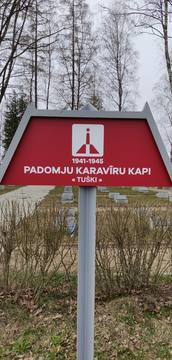
Sovietų armijos kareivių ekshumacija Blīdenės parapijoje 2019 m.
2019 m. liepą kareivių paieškos grupė „Leģenda“ Blīdenės parapijos miške atkasė 66 kareivių pelenus. Dėl paviršutiniškumo ar nutylėjimo sovietmečiu dauguma šių kareivių laikomi oficialiai perlaidotais sovietmečiu. Šių kareivių vardai netgi išgraviruoti ant antkapių Tuškų brolių kapinėse.
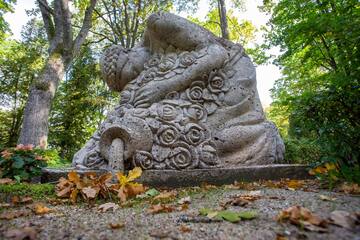
Apie mažiau žinomus latvių skulptoriaus Kārlio Zāles kūrinius senosiose Dīvalos ir Trikātos kapinėse
Vienas iš mažai žinomų skulptoriaus Kārlio Zālės (1888–1942) darbų yra travertino skulptūra „Nukritusios rožės“, sukurta 1939–1940 m. ir siejama su Brolių kapinių ansamblio sukūrimu.
Kunigo pasakojimas apie stojimą į Lietuvos kariuomenę
Kunigo ir būsimojo savanorio atsiminimai, kurie pasakoja apie stojimą į Lietuvos kariuomenę bei pirmąsias karo tarnybos patirtis.

Kuržemės ir Žiemgalos pabėgėlių atminimo vietos ir palaidojimai Cėsiuose
Prieš Pirmąjį pasaulinį karą Latvijos teritorijoje gyveno 2 552 tūkst. žmonių. 1920 m. surašymo duomenimis, jų buvo 1 596 tūkst. Tai reiškia, kad per šį laikotarpį Latvijos gyventojų skaičius sumažėjo 956 tūkst. žmonių arba 37,5 %.
1915 m. vasarą vokiečių kariuomenė okupavo Kuršą ir Žiemgalą. Daugiau nei pusė milijono pabėgėlių begaliniu srautu paliko savo gimtąsias vietas. Pirmieji pabėgėliai į Cėsį atvyko 1915 m. balandžio mėn.

Ball Mountain
Bumbu kalnas – aukšta kalva Bolderajos kopose, Kleistu miške, Rygoje. Latvijos laisvės kovų atminimo vieta. 1919 m. lapkritį, per Bermontiadas, čia buvo įsikūręs Krišjanio Berkio vadovaujamos Latgalos divizijos vadovavimo postas. Nuo Bumbu kalno puolęs 6-asis Rygos pėstininkų pulkas užėmė Sudrabkalninį. 1939 m. buvo įrengta atminimo lenta, kuri buvo sunaikinta 1969 m. Atminimo vieta atkurta 1989 m.
Lūšės mūšis: dvylikos sukilėlių pergalė prieš sovietų traukinį
1941 m. birželio 24 d. Mažeikių apskrities Lūšės stotyje nedidelis lietuvių sukilėlių būrys nuginklavo sovietų karių ešeloną ir išlaisvino į Sibirą vežamus lietuvius bei latvių šeimas - tai tapo vienu iš unikalių 1941 m. Birželio sukilimo epizodų.
Draugiškas Ragaciemo pasienio sargybinis
Artėjant permainų metui Latvijoje, draugiškesnė tapo ir pakrančių apsauga.
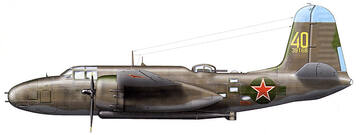
Sovietų aviacijos antskrydžiai Liepojos priemiestyje 1944 m. spalio ir gruodžio mėn
Antrojo pasaulinio karo pabaigoje Vokietijos pajėgos Kurše galėjo sėkmingai gintis septynis mėnesius, nes Vokietijos karinis jūrų laivynas išlaikė kovinį pajėgumą iki Antrojo pasaulinio karo pabaigos ir aprūpino armijų grupę „Šiaurė“, o vėliau ir armijų grupę „Kuržemė“. Pagrindinis uostas buvo Liepoja, per kurią buvo pristatoma ir gabenama 80 % visų krovinių. Taigi Liepoja tapo svarbiu sovietų Baltijos karinio jūrų laivyno ir tolimojo nuotolio aviacijos taikiniu.
Estijos karinis jūrų laivynas padėjo Latvijos pajėgoms Nepriklausomybės karo metu.
Birželio 23 d. estai švenčia Pergalės dieną, taip pažymėdami bendrą Latvijos ir Estijos pergalę Cėsių mūšyje. Ir šioje pergalėje reikšmingą vaidmenį atliko Estijos karinis jūrų laivynas, kuris šiame Landesvero kare, kaip jį vadina estai, savo drąsiais veiksmais ir taikliais patrankų ugnimi prie Dauguvos žiočių kėlė grėsmę pagrindiniams vokiečių pajėgų tiekimo keliams per Dauguvą, esantiems visai netoli Rygos.
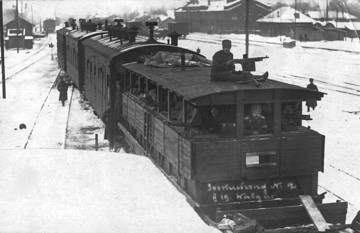
Apie Latvijos Nepriklausomybės karą ir 1919 m. įvykius Alūksnėje
1919 m. kovo 27 d. 1-asis Valmieros pėstininkų pulkas kartu su Talino (tuometinio Rėvelės) ir Tērbato Estijos gvardijos (kaitselit) batalionais bei trimis šarvuočiais traukiniais pradėjo Latvijos išlaisvinimą nuo bolševikų nuo Melnupės upės krantų.
Lietuvos karių pasakojimai apie karo kasdienybę
Atsiminimuose pateikiama atsiminimų iš karo kasdienybės įvairovė, mūšių patirtis, kareiviškas humoras, buities sąlygos ir bolševikų kratos.
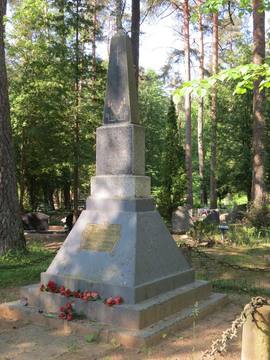
Apie 3-iojo Kaukazo šaulių pulko kareivius, kurie Pirmojo pasaulinio karo metu buvo sušaudyti Jėkabpilyje už kurstymą nepaklusti įsakymams
1916 m. gegužės 18 d., 20.30 val., Kėgerių dvaro griuvėsiuose (apie 7 km į pietus nuo Jekabpilio, už Brodie) už kurstymą nevykdyti įsakymų buvo sušaudyti 3-iojo Kaukazo šaulių pulko kareiviai. Egzekucijai vadovavo prusleitnantas Ravnjaličevas.
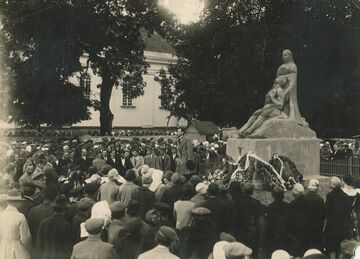
Paminklai Lietuvos Nepriklausomybei. Roberto Antinio sukurtų paminklų istorijos: (I) tarpukaris
Apie 1928 m. Lietuvoje prasidėjo Nepriklausomybės dešimtmečiui paminėti ir Nepriklausomybės kovoms atminti skirtų paminklų statymo bumas, liudijęs apie patriotines lietuvių nuotaikas ir jų pilietiškumą. Šiuo atveju dera išskirti ir skulptoriaus Roberto Antinio darbus, sukurtus 1926–1931 m.
„PZ“ – pasienio zona
Vērgalės kaimo liaudies deputatų tarybos pirmininko (1982–1989 m.) Andrio Zaļkalno prisiminimai apie gyvenimą pasienio zonoje.
Snaiperių medžioklė Anneniekių kalvose
Snaiperių medžioklė apkasuose. Pasakotojas aprašo veiksmus, kuriais siekiama sugauti ir sunaikinti priešo snaiperius.
Atsiminimai apie kovas dėl Lietuvos laisvės
Povilas Plechavičius – Lietuvos kariuomenės generolas, pagarsėjęs kovomis prieš bolševikus ir bermontininkus. 1918-07-25 iš Rusijos grįžęs į Lietuvą, P. Plechavičius apsigyveno Žemaitijoje ir suorganizavo savanorių partizanų būrius kovai prieš bolševikų ir bermontininkų pajėgas, su kuriais kovojo Sedos, Mažeikių, Kretingos ir Telšių apylinkėse.
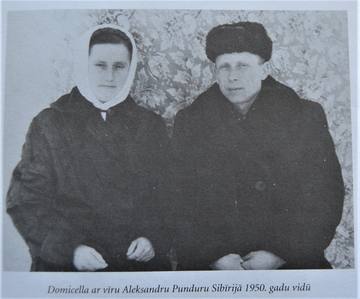
Miško dukra Domicella Dwarf (Lucia)
Domicellai Pundure – 90 metų. 2018 m. gegužės 3 d. Rygos pilyje ji iš prezidento Raimondo Vėjonio rankų gavo Viesturo ordiną už ypatingus nuopelnus nacionalinio pasipriešinimo judėjime ir šalies nepriklausomybės gynime. Domicella Pundure yra paskutinė Stompaku pelkės mūšio liudininkė.
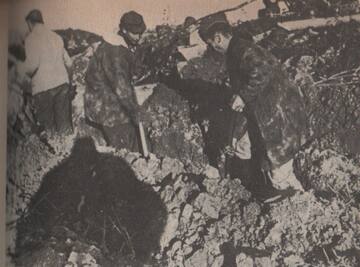
"Kasti geriau nei laidoti!"
Armijų grupės „Kurlandas“ įsakymas yra: „Statykite ir statykite!“ Tai užduotis kiekvienam užnugario fronto kareiviui. Tai geriausiai apibūdina žodis: „Geriau kasti, negu laidoti!“
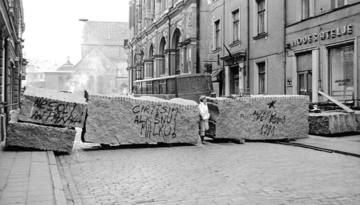
Nuo Rėzeknės iki 1991 m. barikadų
Pasakotojai aprašo barikadų laikotarpio nuotaikas ir asmeninius išgyvenimus. Prisiminimai gerai iliustruoja, kaip informacija pasiekė Latvijos gyventojus visoje jos teritorijoje.
Garsaus Muhu kalvio prisiminimai
Andrus Müüripeal (1877–1945) arba Puka Andrus iš Lepiku kaimo, Pukoje, prieš karą buvo garsus kalvis Muhu saloje.
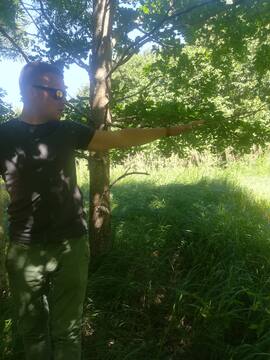
Grieze karo belaisvių stovykla 1945 m.
2020 m. I. Kupcė pasakoja apie savo šeimos nario uošvio patirtį Griezės sovietinėje filtracijos stovykloje 1945 m., po vokiečių armijos kapituliacijos Kuržemėje.

Valentinos Lasmanės sėkmingas pabėgimas
Valentinos Lasmanės biografinis pasakojimas apie tai, kaip jai pavyko pabėgti iš sulaikymo vokiečių okupacijos metu.
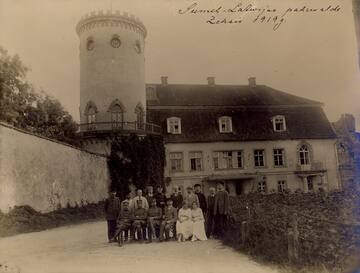
Cėsių Naujoji pilis – sienos, kurios sukūrė Latvijos valstybės saugumą ir iki šiol saugo asmens dokumentus
Cėsių Naujoji pilis buvo pastatyta ant karinio įtvirtinimo – viduramžių pilies – griuvėsių. Tačiau tai ne vienintelė šio pastato karinė reikšmė.
Trispalvė virš Sukilėlių kalnelio
1956 metais, Vengrijos sukilimo įkvėpti, lietuviai iškėlė trispalvę ant Sukilėlių kalnelio - trumpas, bet reikšmingas laisvės ženklas sovietmečiu.
Moterų darbas sovietų tremtyje
Lietuvės tremtinės, įpratusios prie tradicinių moters vaidmenų tarpukario Lietuvoje, tremtyje susidūrė su sunkiu fiziniu darbu ir nauja realybe, kur nebeliko skirtumo tarp "vyriškų" ir "moteriškų" darbų.
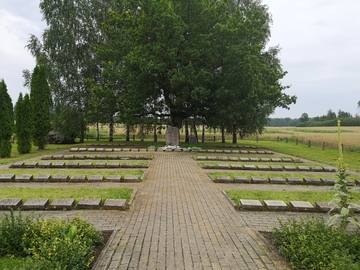
Neatpažinti kareiviai. Kovos karininko istorija.
Morės mūšis – tai Antrojo pasaulinio karo paskutiniojo etapo epizodas, turėjęs didelę reikšmę tolesnei karo eigai Latvijos teritorijoje. Morės mūšis – tai karo veiksmai, vykę nuo 1944 m. rugsėjo 25 d. iki spalio 5 d. Siguldos gynybos linijoje, Morės valsčiaus teritorijoje. Maždaug 12 km ilgio Siguldos gynybos linijos apkasuose Latvijos legiono 19-osios divizijos kariai, 10 dienų kovoję sunkiuose mūšiuose, turėdami 10–15 kartų didesnę priešo persvarą, sustabdė Raudonosios/Sovietų armijos dalinių puolimą Rygos link.
Avinurmės mūšis
Apie Avinurmės mūšį ir sovietų kareivių vykdytą kraujo praliejimą.
Rannu mūšis ir surinkti tekstai iš šio regiono – priežastys didžiuotis Rannu
Apie Rannu mūšį ir jo ryšį su kūriniu „Vardai marmurinėje lentelėje“.
Rainių žudynės: netikėtai atrastos aukos
1941 m. birželio 24-25 d. Rainių miškelyje, netoli Telšių, NKVD ir raudonarmiečiai ypatingai žiauriai nukankino 73 politinius kalinius iš Telšių kalėjimo - tai tapo vienu kraupiausiųjų sovietų nusikaltimų Lietuvoje.
Bunkerio statybos liudijimas
Partizano Liongino Baliukevičiaus Dzūko dienoraštyje aprašomi bunkerio statybos darbai.
Kapitono Mikelėno pasakojimas apie 1 Pėstininkų pulko kūrimąsi
Kpt. Mikelėno atsiminimuose kalbama apie pasitraukimą iš karo belaisvių stovyklos, grįžimą į Lietuvą, stojimą į Lietuvos kariuomenę, bei pirmąsias kovas su bolševikais.
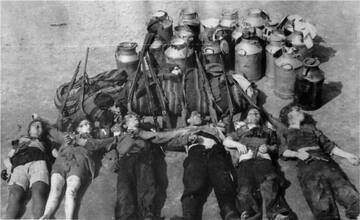
Apie D. Breikšo nacionalinę partizanų grupę
Atminimo vieta įkurta buvusių „Daiņkalni“ ir „Graškalni“ namų vietoje Raunos valsčiuje, po kuriais 1950–1952 m. bunkeriuose slapstėsi Dailonio Breikšio (slapyvardis Edgaras, 1911–1952) vadovaujama nacionalinių partizanų grupė.

Akmeņrago švyturys ir seklumėlė – viena didžiausių laivų kapinių Baltijos jūroje
Būtent Akmensrago švyturio rajone 1923 m. sausio 13 d. tragiškai užplaukė ir sudužo garlaivis „Saratov“ , kuriuo, įkūrus nepriklausomą Latvijos valstybę, prieglobstį rado K. Ulmanio vadovaujama laikinoji vyriausybė.
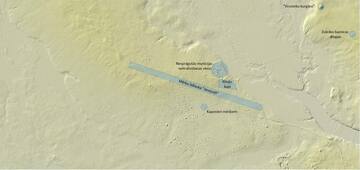
Zvardinekos vaikystė bombų sprogimų šešėlyje – „Polygon Summers“
Vaikystę praleidau netoli Zvārdės poligono, girdėdamas sprogimus ir skraidančius reaktyvinius lėktuvus, bet vis tiek kartais savaitgaliais pavykdavo patekti į poligoną. Pasitraukus sovietų armijai, žemė buvo nusėta bombų krateriais ir daugybe sprogstamųjų objektų ne tik iš poligono, bet ir iš Antrojo pasaulinio karo laikų.

Tomo parapija sunaikinta per Pirmąjį pasaulinį karą
Vienos labiausiai Pirmojo pasaulinio karo metu sunaikintų Latvijos parapijų – Tomės parapijos – istorija

Regiono tyrėjas Žanis Skudra nuteistas 10 metų kalėjimo už „Okupuotos Latvijos dienoraštį“
Žanis Skudra visą laisvalaikį skiria vietos istorijai, visas atostogas – kelionėms po Latviją. Taip jis kaupė medžiagą, fotografavo ir sukūrė „Okupuotos Latvijos dienų knygą“, kurią leidžia Latvijos nacionalinis fondas Stokholme, pasivadinęs Jāniu Dzintarsu.
1978 m. birželio 7 d. Žani Skudra buvo suimtas Taline, o tų pačių metų lapkritį Rygos Aukščiausiasis Teismas jam skyrė dvylikos metų laisvės atėmimo bausmę už išdavystę ir šnipinėjimą.
Mokytojos Rimtautės kelias į Sibirą
Praėjus vos dviem mėnesiams po vestuvių, mokytoja Rimtautė Jakaitienė kartu su vyru ir jo tėvais buvo ištremta į Sibirą. Be teismo, be kaltinimų - tiesiog už tai, kad buvo šeima.
Moterys Lietuvos šaulių sąjungos gretose
Pasakojama apie moterų vaidmenį Lietuvos šaulių sąjungos gretose.
Nepriklausomybės kovų paminklas Mustjaloje
Mustjalos Nepriklausomybės karo memorialas buvo atminimo akmuo Estijos Respublikos laikais.
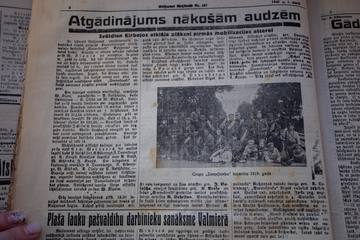
Šiaurės Latvijos armijos įkūrimo Rūjienos pusėje fragmentas
Šiaurės Latvijos armija buvo Latvijos karinis darinys, veikęs Latvijos nepriklausomybės karo metu, suformuotas nuo 1919 m. vasario 3 d. iki kovo 31 d. Estijos teritorijoje ir Šiaurės Vidžemės regionuose, kuriuos išlaisvino Estijos armija. Iki 1919 m. liepos mėn. brigada logistikos ir operacijų požiūriu buvo pavaldi Estijos ginkluotųjų pajėgų štabui ir Estijos armijos vyriausiajam vadui. Vėliau ji buvo sujungta su Pietų Latvijos brigada, sudarant Latvijos armiją.
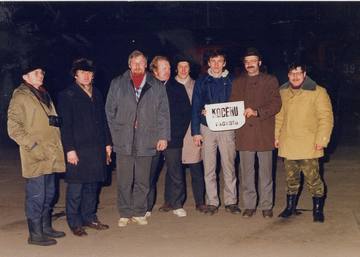
Kocēniečio Tālavo Megnio prisiminimai apie įvykius 1991 m. barikadų Rygoje
Kocēniečio Tālavo Megnio prisiminimai apie įvykius 1991-ųjų barikadų Rygoje.
„Sausio 13 d. apie 40 Kocėnų gyventojų organizuotai išvyko iš kolūkio į demonstraciją Rygoje autobusu „Laz“, kurį vairavo Vitalijus Spruktas, ir mikroautobusu „Latvija“, kurį vairavo Janis Grava.
Po demonstracijos, kai susitikome prie autobusų, kelis kartus per radiją girdėjome Latvijos liaudies fronto raginimą tiems, kurie gali, likti Rygoje ir ginti strategiškai svarbius objektus, kad būtų sunkiau juos užgrobti, panašiai kaip nutiko prie Vilnios televizijos. Šiuos kadrus matėme, kuriuos Podnieks nufilmavo prieš išvykdamas į Rygą.
Hansas-Gotthardas Pestke
Riterio kryžiaus riteris kovose už Hijuma užėmimą
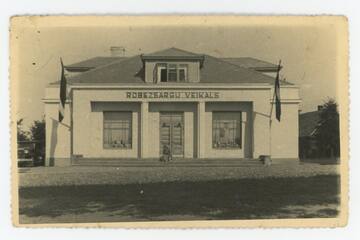
Latgalos pasienio apsauga pulkininko Liudviko Bolšteino valdymo laikais (1935–1940 m.)
1935–1940 m., vadovaujant pulkininkui Ludwigui Bolsteinui, iškiliam vadui ir patriotiškai nusiteikusiam lyderiui, pasienio apsauga klestėjo – buvo pastatyti nauji pasienio apsaugos pastatai, kuriuose gyveno ir jų šeimos.
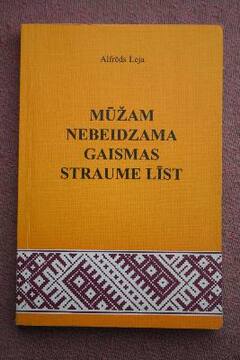
Poeto Alfredo Lėjos prisiminimai
Buvusio aivzvīgiko Alfrēdo Lėjos prisiminimai iš knygos „Amžinai krenta nesibaigianti lietaus srovė“.
Aizvīkiai ir jų gyventojai taip pat labai nukentėjo Antrojo pasaulinio karo supervalstybių malūnuose.
Alfredas Ley savo memuaruose rašo:
Plk. Ltn. Kukino prisiminimai iš Dauguvos fronto
Atsiminimuose liudijama, kaip buvo sužeistas, neteko vienos akies, tačiau grįžo tęsti kovos karo invalidas Jonas Karutis.
Apie Stebelio baterijos konstrukciją
Baterijos gamyba buvo labai brangi.
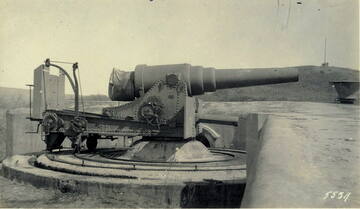
Apie Liepojos tvirtovės patrankas
Šiaurinėje tvirtovės dalyje buvo viena iš keturių pakrantės gynybos baterijų – 1-oji baterija, tačiau tvirtovės likvidavimo metu jos ginkluotė nebuvo pilnai sumontuota.
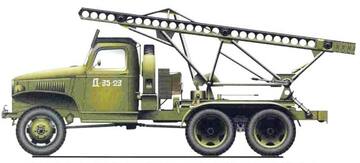
Aizvīki Kuržemės katile
Aizvykių parke vis dar galima aiškiai pamatyti Antrojo pasaulinio karo bunkerių, apkasų ir kaponierų pylimų liekanas, kuriose buvo laikomi ginklai. Viena iš ginklų rūšių buvo raketų paleidimo sistema „Katiuša“.
Tartu – JAV branduolinių taikinių sąraše Šaltajame kare
Šaltojo karo metu Tartu esantis Raadi karinis aerodromas buvo JAV branduolinio ginklo atakos taikinys.
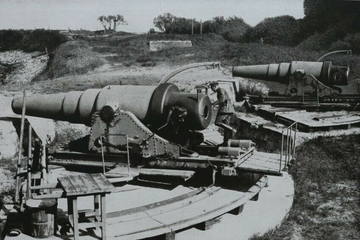
Apie Daugavgryvos tvirtovę
Pasakotojas aprašo įvykį Daugavgryvos tvirtovėje Pirmojo pasaulinio karo metu, kai ją subombardavo vokiečių armijos dirižablis. Tvirtovė buvo vienas iš strateginių objektų, išlaikiusių savo svarbą iki Antrojo pasaulinio karo pabaigos.
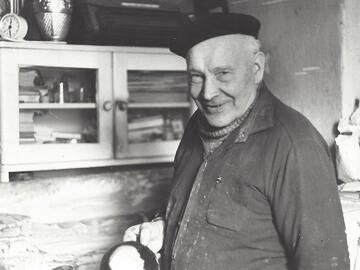
Prisiminimai apie Žanį Lipkę
Po sovietų okupacijos sekė vokiečių okupacija. Naciai vykdė nusikaltimus prieš Latvijos gyventojus. Viena iš šių etninių grupių buvo žydai. Iš pradžių buvo įkurti getai, bet vėliau sekė žydų naikinimas. Daugelis latvių gelbėjo žydus nuo sunaikinimo. Vienas iš jų buvo Žanis Lipkė.
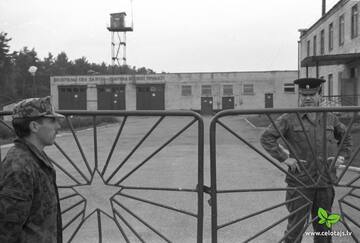
Apie Kolkos pasienio apsaugos pareigūnus
Kolkos gyventoja Baiba Šuvcāne pasakoja apie laikus Kolkoje, kai ten buvo pasieniečiai.

Latvijos šaulių kasdienybė Mirties saloje
Memuaruose vaizdžiai aprašomas kareivių kasdienis gyvenimas Mirties saloje.
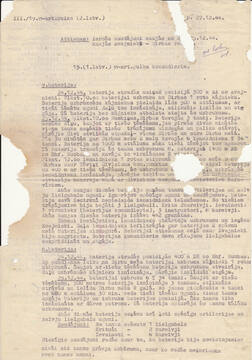
III/19-ojo artilerijos pulko (2-ojo Latvijos) kapitono Janio Ozolo ataskaita apie 1944 m. gruodžio 24 ir 25 d. mūšius
Divizijos vadas kapitonas Jānis Ozols savo 1944 m. gruodžio 27 d. ataskaitoje 15-ojo (1-ojo Latvijos) SS artilerijos pulko vadui praneša apie 7-osios, 8-osios ir 9-osios baterijos pabūklų nuostolius gruodžio 24–25 d. mūšiuose Zvejniekių – Dirbos apylinkėse.
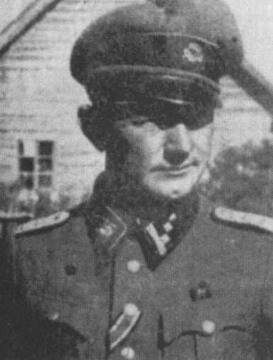
Pēteris Čeversas – nacionalinis partizanas ir partizanų būrio vadas
Pēteris Čevera – nacionalinis partizanas ir nacionalinių partizanų būrio vadas
Ištrauka apie 1926 m. gruodžio 17 d. perversmą iš gen. V. Grigaliūno Glovackio atsiminimų
Atsiminimuose aprašomas epizodas kuomet perversmininkai išlaisvino plk. V. Grigaliūną Glovackį iš Kauno kalėjimo ir nurodė įsitraukti į perversmo vykdymą.
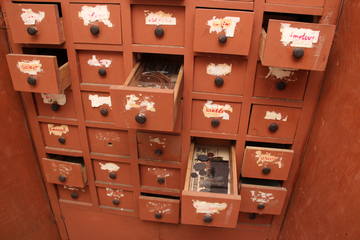
Apie kampinį namą
Pasakotoja aprašo pirmuosius įspūdžius atvykus į Kampinį namą. Prisiminimai atskleidžia atšiaurias kalinių gyvenimo sąlygas.

Janio Tilibso prisiminimai apie partizanų būrį „Tėvo vanagai“
Jāņo Tilibso atsiminimai apie partizanų būrio „Tēvijas Vanagi“ veiklą Pietų Kuržemėje iki 1950 m.

Reidas Vaiņodės aerodrome 1941 m
Vokiečių aviacijos antskrydžio Vainodės aerodrome 1941 m. birželį istorija
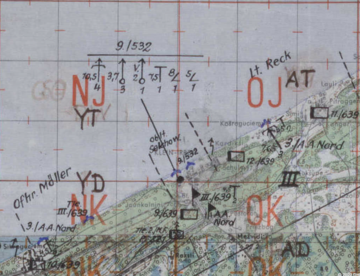
Raudonosios ir vokiečių armijų planai tarp Mazirbės ir Gipkos 1945 m. gegužę
Pačioje Antrojo pasaulinio karo pabaigoje tiek puolamosiose pozicijose buvusi Raudonoji armija, tiek gynybinėse pozicijose buvusi Vokietijos armija turėjo planų, kurių, atsižvelgiant į Antrojo pasaulinio karo pabaigą, nė viena pusė neįgyvendino.
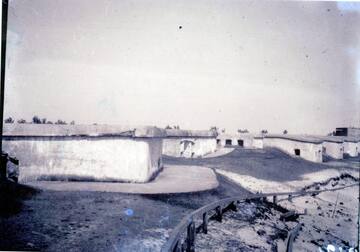
Kariuomenės buvimas Mangalsaloje
Atsiminimuose ryškūs įspūdžiai apie Latvijos kariuomenės buvimą Mangalsaloje. Aprašomi fortai, taip pat sapierų pastatytas gelžbetoninis įtvirtinimas. Atsiminimuose aprašomas karių kasdienis gyvenimas, gyvenimo ritmas ir iliustruojama Mangalsalos aplinka. Mangalsalos ir Latvijos armijos karių vizitas.
Sklindžiai su "Neptūnu": MGB nuodai partizanams
1955 metais Žemaitijos partizanai tapo sovietų MGB agento klastingos operacijos aukomis - specialiais preparatais užnuodyti sklindžiai su medumi turėjo pražudyti laisvės kovotojus.
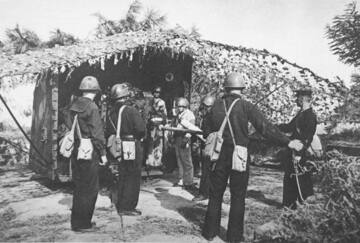
46-osios pakrantės gynybos baterijos ugnies valdymo bokšto Ventspilyje istorija
Ventspilio karinio paveldo objektas yra unikalus, nes tai vienas iš nedaugelio pakrantės gynybos statinių Latvijoje ir Baltijos šalyse, vaizduojančių Antrojo pasaulinio karo įtvirtinimų istoriją. Jis taip pat unikalus tuo, kad tai Sovietų Sąjungos karinis objektas, pastatytas Latvijos Respublikos nepriklausomybės metais, ir tam tikra prasme simbolizuoja mažos šalies nesugebėjimą pasipriešinti supervalstybėms Antrojo pasaulinio karo išvakarėse. Tai vienintelė pakrantės gynybos baterija, kuri taip gerai išliko be istorinių sluoksnių ir visiškai pastatyta. Objekte atsispindi visa sovietinės karinės koncepcijos evoliucija nuo 1939 m. iki sovietų kariuomenės išvedimo 1994 m.
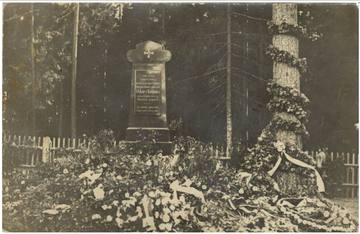
Pulkininko Kalpako paskutinis mūšis netoli Airytės
Pulkininkas Kalpakas buvo gerbiama figūra kariniuose sluoksniuose ir tikras patriotas. Būtent patriotizmo dvasia ir nelaimingas atsitiktinumas lėmė lemtingą jo ir vokiečių batalionų susidūrimą, kuris, deja, baigėsi pulkininko Kalpako mirtimi.
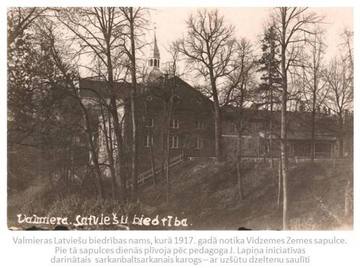
1917 m. kovas – svarbus mėnuo Valmieros ir Latvijos istorijoje
1917 m. kovo mėn., likus daugiau nei metams iki Latvijos valstybės paskelbimo, Valmieroje buvo įkurta Vidžemės laikinoji žemės taryba, kuri priėmė rezoliuciją dėl Latvijos autonomijos ir apsisprendimo teisių. Tarybos įkūrimo dieną posėdžių vietoje pirmą kartą buvo iškelta raudonai baltai raudona vėliava.
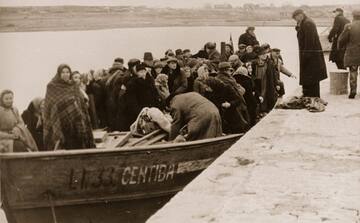
Pirmasis pabėgėlių laivas „Centība“ iš Bambalio
1944 m. spalio 31 d. laivas „Centība“ išplaukė iš Kuržemės pakrantės. Šio laivo išvykimą, remdamasi kelių bendrakeleivių prisiminimais, atkūrė Latvijos Centrinės Tarybos sušaukėja Valentine Lasmane.
Pasienio apsaugos skalbėja
Kolkės gyventoja Mirdza Stankevica dalijasi prisiminimais apie laikus, kai ji dirbo skalbėja.

Rygos centrinio turgaus angarai
Tuo metu, kai buvo statomas Rygos centrinis turgus, jis buvo vienas moderniausių pasaulyje. Jis buvo pastatytas naudojant Pirmojo pasaulinio karo vokiečių armijos dirižablių angarų metalines konstrukcijas. Autorius aprašo Rygos centrinio turgaus statybos prielaidas ir statybos darbų apimtį, todėl tai buvo vienas ambicingiausių statinių pokario Latvijoje ir vienas moderniausių turgų pasaulyje.
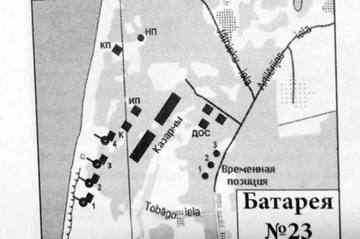
Karostos unikalaus karinio objekto istorija
Jau daugelį metų nepastebėjau jokio nuolatinio Senosios Liepojos gyventojų susidomėjimo unikaliomis vietomis, esančiomis vos už aštuonių–dešimties kilometrų į šiaurę nuo miesto centro. Tačiau miško tankmėje, kopų šlaite ar pelkių takuose pasislėpusios istorinės Karostos vietos yra ne mažiau įdomūs istoriniai faktai ir istorijos, vertos seniai pamirštų legendų. Viena iš jų – buvusi 23-oji SSRS pakrantės artilerijos baterija – ir bus šio pasakojimo tema.
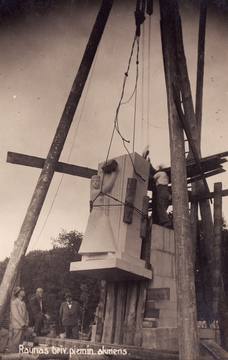
Raunos Laisvės paminklas arba Paminklas Raunos parapijos narių, žuvusių Pirmajame pasauliniame kare ir Laisvės kovose, atminimui
Raunos Laisvės paminklo idėjos ištakas galima sieti su 1929 m. rugpjūčio 21 d., kai Cėsių meras ir Cėsių rajono vadovas pakvietė į susitikimą žymiausius Raunos parapijos visuomenės veikėjus, kviesdami pagerbti laisvės pasiekimą ir pastatyti paminklą Raunoje.

Ilūkstės partizanų pulko žygis
Jānis Baltmanis dalijasi prisiminimais apie dalyvavimą nacionalinio pasipriešinimo judėjime nuo 1944 m. vasaros iki 1946 m. vasaros.
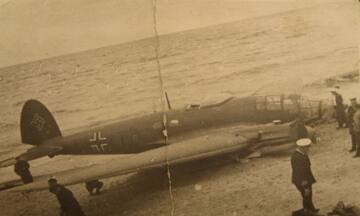
Karosta – vokiško He-111 nusileidimo vieta Liepojos paplūdimyje 1939 m.
1939 m. rugsėjo 11 d. vokiečių bombonešis „Henkel He-111“, reidavęs Lenkijos miestus, naktį nukrypo nuo kurso ir avariniu būdu nusileido Liepojos paplūdimyje. Šis įvykis aprašytas Liepojos gyventojo ir Kuržemės divizijos ryšių kuopos karininko Vilio Zobenso atsiminimuose. Nusileidimo vieta gamtoje nepažymėta. Apytikslės koordinatės yra N 56.59368° E 21.01598° – paplūdimyje netoli Šiaurinių fortų.
Kaip kažkas pabėgo nuo pasieniečių Ventspilyje savadarbiu laivu
Sovietmečiu Ventspilio uoste buvo dislokuoti pasienio patrulių laivai, kurių užduotis buvo patruliuoti Baltijos jūros vandenyse ir neleisti kirsti sienos iš abiejų pusių – iš išorės į vidų arba iš vidaus. Tačiau aštuntajame dešimtmetyje Ventspilyje įvyko nepaprastas incidentas, apie kurį ventspiliečiai ilgai šnabždėjosi ir garsiai juokėsi.

Buvusio legiono leitenanto - čekų agento Arvīdo Gailīčio vaidmuo likviduojant Pēterio Čeverso grupuotę
Kapitonas Pēteris Čeversas ir dar septyni partizanai buvo sugauti 1950 m. lapkričio 1 d. Engurės miškų masyve, kur, visiškai atsitiktinai, netoliese buvo dislokuota netikra partizanų grupė, vadovaujama buvusio Legiono leitenanto Arvydo Gailīčio (agento-kovotojo slapyvardis „Grosbergas“). Joje buvo Latvijos SSR VDM operatyvininkų ir agentų-kovotojų, apsimetusių „miško broliais“.
Aviacijos variklių bandymų laboratorija
Sovietmečiu į šiaurę nuo Spilvės gatvės, jei neklystu, stovėjo keistas objektas – su dviem žemais stačiakampiais raudonų plytų „megakaminais“, iš kurių gana dažnai girdėjosi reaktyvinio lėktuvo garsas, panašus į lėktuvų variklių riaumojimą.
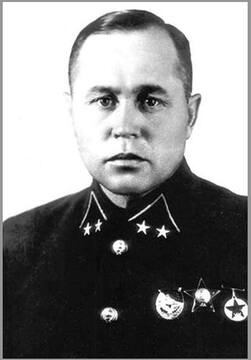
Generolo majoro N. Dedajevo sužalojimas Liepojos tvirtovėje, Viduso forte
1941 m. birželį sėkmingas vokiečių armijos puolimas pasiekė Liepoją, kai Liepoją puolė Vokietijos šarvuočių 291-oji pėstininkų divizija. Kai 1941 m. birželį prasidėjo karo veiksmai tarp nacistinės Vokietijos ir Sovietų Sąjungos, sovietų armijos Liepojos garnizoną sudarė Liepojos jūrų bazės ir Raudonosios armijos kariai. Šių mūšių metu generolas majoras N. Dedajevas buvo mirtinai sužeistas.

Cėsių pulko studentų būriui skirtas paminklas prie buvusių Livu parapijos salės
1919 m. Cėsių mūšiuose dalyvavo Cėsių pulko savanorių moksleivių kuopa, kuri birželio 5 d. Cėsių progimnazijos patalpose susiformavo kaip kovinis vienetas iš 108 Valmieros ir Cėsių mokyklų jaunuolių. Jau naktį iš birželio 5 į 6 d., maždaug po valandos vidurnakčio, buvo paskelbtas aliarmas ir kuopai buvo įsakyta persikelti į pozicijas. Kuopa persikėlė į Mācītājmuižos - Meijermuižos liniją, kuri buvo laikoma svarbiausia mūšio vieta.
Pirmajame mūšyje buvo sužeisti keli moksleiviai, tačiau tą pačią dieną nuo labai sunkios pilvo žaizdos mirė Edgaras Krieviņšas, kilęs iš Valmieros. Jis buvo palaidotas su karine pagarba Valmieros miesto kapinėse birželio 13 d. Edgarui Krieviņam po mirties buvo įteiktas Lačplėšio karo ordinas.
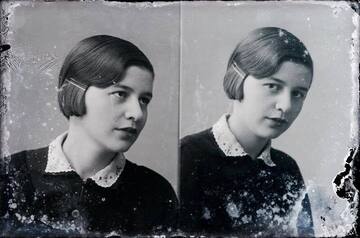
Meilės istorija, kurią užbaigė karas
Ši istorija pasakoja apie Prano Laucevičiaus ir Rūtos Gurvičiūtės meilę ir išlikimo kovą Antrojo pasaulinio karo metais. Ji liudija apie drąsą, pasiaukojimą ir mirtį, kai karo žiaurumai užgniaužė tautybių ribas, bet ne žmonių jausmus.

Aizporių dvaras Nepriklausomybės kovų metu
Aizporų pusdvaras, Aizputės rajonas, Kalvenės savivaldybė, yra vakariausia Latvijos vieta, į kurią atsitraukė pulkininko Oskaro Kalpako atskirasis batalionas.
Pusiaukelėje tarp Rudbāržių ir Kalvenės, pakelėje, yra Aizporės kapinės. Jose stovi paminklas ir 12 atminimo ženklų Oskaro Kalpakos bataliono savanoriams kariams.

Neįgyvendinti sovietų armijos planai Kuržemės pakrantėje Melnsil ir Gipkoje
Antrojo pasaulinio karo pabaigoje Melnsilyje buvo dislokuota Vokietijos karinio jūrų laivyno 532-osios artilerijos divizijos 6-oji baterija, tačiau Raudonoji armija turėjo savo planus šiai vietovei, kurie nebuvo įgyvendinti iki pat Vokietijos armijos kapituliacijos 1945 m. gegužę.
Kūdikio laukimas miškuose
Istorija pasakoja moters partizanės slaptymąsi ir vaiko gimimą ir auginimą miškuose.
Panevėžio pulko kareivio atsiminimai apie karo kasdienybę
Anoniminiai pėstininko atsiminimai, išspausdinti Lietuvos šaulių sąjungos žurnale „Trimitas“, kuriuose aprašomos kautynės ir karo buitis Nepriklausomybės kovose.
„Bet – kas gi gyvena prie jūros...“ (fragmentas)
Trumpa ištrauka iš interviu su Eriku Sēniu iš Ģipkos. Jis pasakoja savo gyvenimo prisiminimus.
Rėzeknės bombardavimas 1944 m.
Rėzeknės bombardavimas įvyko 1944 m. Velykas. Dėl to buvo sugriauta didelė dalis miesto pastatų, žuvo dešimtys civilių, o tūkstančiai liko be namų. Žmonės, kurie šiuos įvykius patyrė patys ir gali apie juos papasakoti, tuo metu buvo tik vaikai. Šios istorijos autorius yra vienas iš jų.
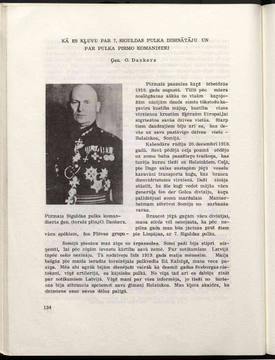
7. Siguldos pėstininkų pulko formavimas
1919 m. birželio 20 d. Naukšėnų dvare, netoli Rūjienos, Šiaurės Latvijos brigados vado pulkininko Jorgio Zemitano įsakymu pradėtas formuoti 7-asis Siguldos pėstininkų pulkas. Iš pradžių iš Šiaurės Latvijos brigados rezervinio bataliono buvo suformuota nedidelė kovinė grupė, susidedanti iš 22 karininkų ir 1580 kareivių, kuri, pagerbiant pirmąjį vadą Oskarą Dankerį, buvo pavadinta Dankerio divizija. Po kelių dienų divizija buvo įtraukta į 3-iojo Jelgavos pulko 2-ąjį batalioną, o rugpjūčio 23 d., pridėjus kuopą, – į 7-ąjį Siguldos pėstininkų pulką.
Apie Raudonosios armijos kareivių nusikaltimus Tukume.
Tukume sovietų okupacijos metu buvo pastatyta keletas Raudonosios armijos paminklų. Šiandien jie vis dar neprarado savo buvusių, sovietinių ideologinių tikslų ir toliau kuria Raudonosios armijos, kaip išvaduotojų, mitą. Apie Raudonosios armijos karių nusikaltimus išliko įvairių šaltinių. Vieną šaltinių grupę galima rasti vietiniuose laikraščiuose, kuriuose vaizdžiai aprašomas Raudonosios armijos nusikaltimų atlaidumas ir mastas.
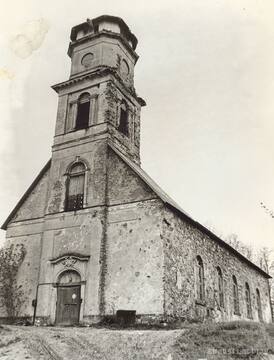
Kaip Raudonosios armijos kareiviai sudegino Remtės bažnyčią
Po Vokietijos ir armijų grupės „Kuršas“ kapituliacijos 1945 m. gegužės 8 ir 9 d. nugalėtojai įvairiose Kuršo vietose šventė savo pergalę įvairiais būdais. Remtėje šių švenčių metu sudegė Remtės bažnyčia. Bažnyčios varpininko šeima visą okupacijos laiką laikė bažnyčios varpą savo sodyboje.
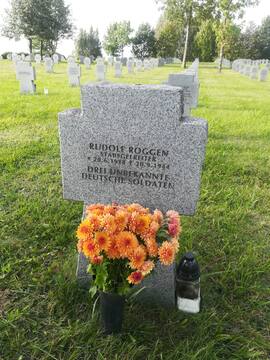
„Karas nesibaigia, kol nepalaidotas paskutinis kareivis“ (Saldus vokiečių kareivių kapinės)
Kuržemė kaip atskiras ir savitas mūšio laukas iškilo 1944 m. spalio 10 d. Buvo suskaičiuota, kad apsuptyje buvo apie 500 000 vokiečių karių. Remiantis 1-ojo Baltijos fronto štabo pranešimais, norint visiškai išlaisvinti visą Baltijos pakrantę, reikėjo tik „nedidelių pastangų“. Tačiau kovos Kurše tęsėsi dar septynis mėnesius, ir Kurše tapo Antrojo pasaulinio karo pabaigos simboliu.
Per septynis kovos mėnesius iki 1945 m. gegužės mėn. vokiečių pajėgos Kurše neteko 154 108 žuvusių, sužeistų ir dingusių be žinios kareivių. Nuo 1997 m. netoli Saldus atliktas karo kapinių tyrimas ir perlaidojami kareiviai, o šiuo metu čia galima rasti 27 000 žuvusių kareivių vardų.
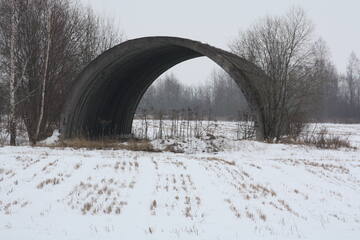
Karinis aerodromas netoli Tukumo
Vos matomuose, žole apaugusiuose angaruose prie greitkelio į Tukumą sovietmečiu buvo dislokuoti armijos naikintuvai. Net ir tais laikais aerodromas ir angarai buvo maskuojami, ir nepatyrusieji apie tai nė nenutuokė.
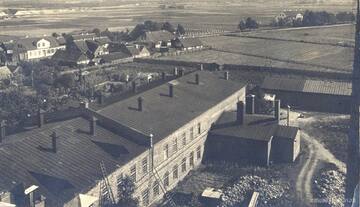
Buvusi medžio apdirbimo įmonė „Vulkāns“
Galinga gamykla, turinti turtingą istoriją, siekiančią 1878 m.
Seserys išgelbėjo kulkosvaidžius ir sužeistus karius Baltriškėse
Pasakojimas apie seseris, kurios buvo apdovanotos Vyties Kryžiaus ordinu už pagalbą kariuomenei kovose prieš bolševikus.
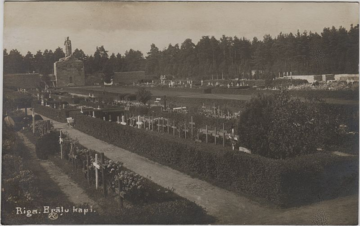
Taip gimė Rygos Brolių kapinės
Pasakotojas aprašo aplinkybes, kuriomis buvo sukurtas garsiausias Latvijos memorialas, skirtas žuvusiems kariams. Kaip matyti iš atsiminimų, nacionalinių didvyrių kapinės susidūrė su daugybe kliūčių ir nepalankiu – niekinančiu požiūriu ne tik iš bažnyčios, bet ir iš Rygos miesto valdžios pusės.
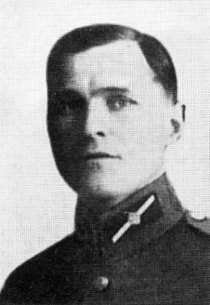
Stebuklingas pulkininko leitenanto Eduardo Graudino išsigelbėjimas nuo sušaudymo
1944 m. lapkritį vokiečių okupacinės valdžios karo teismas nuteisė 8 generolo Kurelio grupės štabo karininkus, trims štabo karininkams dėl įvairių priežasčių buvo suteikta malonė. Pulkininkui leitenantui pavyko išvengti sušaudymo, tačiau Graudinį „sutrypė“ vokiečių koncentracijos stovyklų sistema.

Atminimo akimirka Garisono kapinėse
Atkūrus Latvijos nepriklausomybę, Alūksnės brolių kapinių komiteto vadovas Uldis Veldre ėmėsi rūpintis Garnizono kapinių priežiūra, nustatyti su Alūksne susijusias LKOK poilsio vietas ir įrengti atminimo ženklus Garnizono kapinėse.
„Vėjas. Nepaisymas. Ir Livonijos vėliava.“ (fragmentas) – Vaiduoklių laivai ir spygliuota viela
Guntos Kārkliņas prisiminimai apie sovietmetį Livonijos pakrantėje – kaip ten atsirado laivų kapinės?
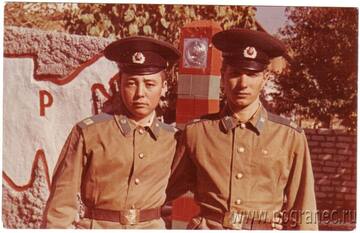
Nepažįstamieji pasienio zonoje
Pasienio apsaugos pareigūnai turėjo unikalų būdą sužinoti apie nepažįstamus asmenis pasienio ruože.
Prireiks - kovosim: Radviliškio kautynės su bermontininkais 1919 m.
1919 m. lapkričio 21-22 dienomis Radviliškio mieste įvyko lemtingos kautynės tarp Lietuvos kariuomenės ir bermontininkų - rusų belaisvių bei vokiečių savanorių jungtinių pajėgų, kurios baigėsi reikšminga lietuvių pergale.

Atradimas Grieze filtracijos stovyklos vietoje
Grieze filtracijos stovyklos teritorijoje ir pakelėse, vedančiose į ją, dažnai randami įvairūs buvusiems kareiviams priklausę daiktai. Kareiviai, suimti civiliai, karo belaisviai ir kt. jais atsikratydavo dėl įvairių priežasčių – tiek norėdami išvengti identifikavimo, tiek norėdami išvengti „ypatingo dėmesio“.
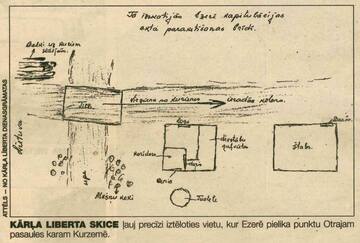
Kārlio Liberto prisiminimai apie vokiečių armijos kapituliacijos dieną Ezerėje
Ezerės kultūros istorijos ir kraštotyros medžiagų saugykla „Muitinė“ įsikūrusi istoriškai reikšmingame pastate. 1945 m. gegužės 8 d. čia buvo pasirašytas nacistinės Vokietijos armijos grupės „Kurlandas“, kuri buvo apsupta Kuržemės fronte, kapituliacijos aktas.
Buvęs Raudonosios armijos kareivis Kārlis Liberts dalijasi prisiminimais apie tos dienos įvykius.
Talmuto Allvee prisiminimai apie Ninasės pakrantės gynybos baterijos statybą
Pirmieji statybininkai Ninose pasirodė jau 1939 metų rudenį.
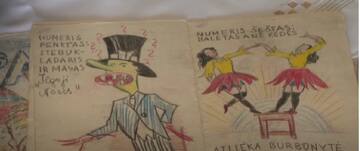
„Taiga“ tremtyje – žurnalistika prieš režimą
Vytenis Rimkus menininkas, kuris už Sibiro tremtyje leistą laikraštį „Taiga“ buvo nuteistas mirties bausme, bet likimas jam leido išgyventi ir sugrįžti į Lietuvą. Tai pasakojimas apie dvasios stiprybę, kūrybos galią ir neištrinamą tautinę tapatybę net gūdžiausioje tremtyje.
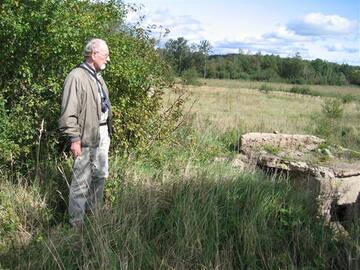
19-mečio Alfonso Wolgemutho pasakojimas apie žvalgybos mūšį 1945 m. vasario 17 d. netoli Priekulės
Alfonsas Volgemuthas buvo 19 metų berniukas, radijo operatorius ir tarnavo nacistinės Vokietijos armijoje.
„Iš šios operacijos niekas negrįžo ir nežinoma, ar yra išgyvenusiųjų. Aš pats dalyvavau tame kare kaip 19 metų radijo operatorius ir esu vienas iš 2, vėliau 3 išgyvenusiųjų, kuriuos rusai paėmė į nelaisvę. Noriu prisiminti įvykius iš savo patirties.“
Kpt. Romo Marcinkaus tarnavusio Anglijos karinėse oro pajėgose žūties istorija
Pasakojama apie į Angliją pabėgusio bei Anglijos oro pajėgose tarnavusio kpt. R. Marcinkaus pabėgimo iš koncentracijos stovyklos ir žūties istoriją.
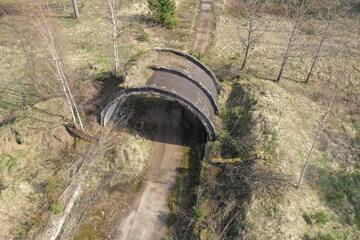
Branduolinės ginkluotės pėdsakais Šateikių girioje
1960-1978 m. laikotarpiu Plungės rajone, Šateikių kaimo miškuose veikė antžeminė raketų paleidimo bazė, kurioje buvo dislokuotos vidutinio nuotolio termobranduolinės raketos R12U. Raketas išgabenus, bazėje dislokuota 384-oji didelio galingumo artilerijos brigada. Jos žinioje buvo savaeigės 203 mm kalibro haubicos 2S7 „Pion“ ir daugybė įvairios kitos ginkluotės, kuri kainavo gyvybes.
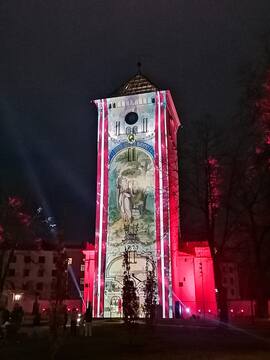
Jelgavos Švč.Trejybės bažnyčios bokštas Akadēmijas gatvėje 1, kuriame Egons Užkurelis ir Jānis Ģēģeris 1952 metais iškėlė savadarbę Latvijos vėliavą.
1952 m. spalio 12 d. Egonas Užkurelis, kuriam tuo metu buvo vos 14 metų, kartu su metais vyresniu draugu Jāniu Ģėgeriu ant 1944 m. liepos–rugpjūčio mėn. sovietų–vokiečių kare sunaikintos Šv. Trejybės bažnyčios bokšto pakabino savadarbę Latvijos nacionalinę vėliavą.
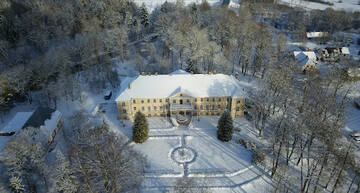
Generolo Ridiger von der Goltz vizitas į Rudbārži 1919 m. vasario mėn
1919 m. vasarį, po sėkmingos antivokiškos kampanijos Suomijoje, vokiečių generolas Ridiger von der Goltz buvo paskirtas vokiečių ginkluotų junginių Kurše ir Šiaurės Lietuvoje, įskaitant Landwehrą, kuriam priklausė ir 1-asis Latvijos batalionas, vadu. Vizito fronte metu 1919 m. vasarį jis taip pat atvyko į Rudbāržius. Bataliono specialiųjų užduočių karininkas leitenantas Jānis Ķīselis aprašė generolo vizitą savo memuaruose.
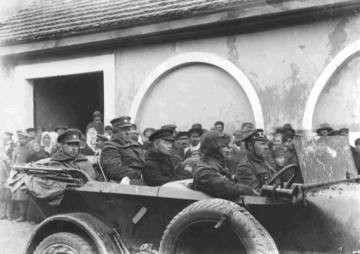
Karlio Ulmanio nužudymo memorialas
1920 m. balandžio 15 d. buvo pasikėsinta pasikėsinti į tuometinį Latvijos ministrą pirmininką Kārlį Ulmanį, kai šis važiavo automobiliu miškingoje vietovėje Lubanos–Dzelzavos plente. Šioje vietoje, tarp Dzelzavos ir Indranų valsčių ribos, 1939 m. rugpjūčio 11 d. buvo įrengta atminimo lenta.
Abruka
Prasidėjus karui 1941 m. vasarą, raudoniesiems kareiviams Abrukoje buvo uždrausta bendrauti su vietos gyventojais.
Šaltinis: Atmintinė Baltijos kelio organizatoriams
Pateikiami su 1989 m. Baltijos kelio organizavimu susiję dokumentai, atskleidžiantys akcijos organizacinius rūpesčius, jos simbolines detales ir jų prasmes.
Karo invalidų pasakojimai apie sužeidimus ir gydymosi karo ligoninėje patirtys
Atsiminimai atskleidžia dviejų Broniaus Tvarkūno ir Liudo Sakalinio stojimo į kariuomenę, sužeidimo, gydymosi karo ligoninėje patirtis.
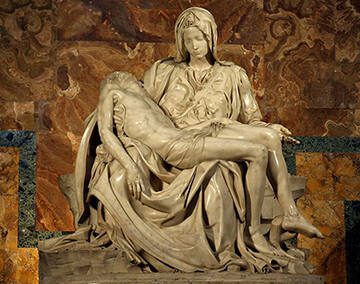
Pieta arba „Mamos“ memorialinis ansamblis Nīkrace
Pieta, arba Mamytė, yra gerai žinomas motyvas Europos kultūroje ir mene, jis buvo naudojamas ir sovietmečiu.

Istoriniai įrodymai Līči – Laņģi skardžiuose
Kraštotyros entuziasto Aivaro Vilnio pasakojimo apie istoriją ir jos įrodymus, rastus Lodėje ir Liepoje, dabartinės Cėsių savivaldybės teritorijoje, fragmentai.
Julius Kuperjanovas ir jo kapas
Estijos Nepriklausomybės karo didvyrio Juliaus Kuperjanovo kapas sovietmečiu tapo pasipriešinimo simboliu.
Kogulos aerodromas Saremos saloje
Kogulos oro pajėgų bazės statyba prasidėjo 1940 m. rugpjūtį.
Rusijos armijos išvedimas iš Lietuvos 1993 m.
1993 m. rugpjūčio 31 d. paskutinis Rusijos armijos karinis ešelonas pravažiavo Kenos geležinkelio stotį, oficialiai užbaigdamas beveik 50 metų trukusią sovietinę karinę okupaciją Lietuvoje.
Gelbėtas tiltas per Negos upę nuo sprogdinimo
1944 m., vokiečiams traukiantis, buvo susprogdinta daug svarbių objektų ir to išvengti buvo labai sunku, tačiau pasakojama ir apie stebuklingus atvejus, kai vietos gyventojų drąsa ir kareivio tolerancija leido išsaugoti vietos gyventojams svarbias vietas, o lašišos išgyveno. Viena iš istorijų – apie namų šeimininkės ir vokiečių kareivio pokalbį, kuris išgelbėjo visą tiltą nuo susprogdinimo.
Kaip Reola buvo išlaisvinta
1919 m. sausio mėn. vykusio Reolos mūšio, laikomo lūžio tašku Nepriklausomybės kare, kurio metu Estijos kariuomenė sužlugdė Raudonosios armijos bandymą užimti Tartu, aprašymas.

Apie paskutinę Vidzemes partizanų grupę
Neįtikėtina istorija apie tai, kaip čekistai „pasidavė“ paskutinei Vidžemėje esančiai partizanų grupei, prašydami jų išeiti iš miško.
Žvaigždė – šarvuotas automobilis
Tarpukariu „Arsenal“ karinė gamykla gamino Estijos šarvuočius. Jų kopija saugoma Jegevos karo muziejuje.
Petro Tarasenkos knygos „Lietuvių kovos dėl Nepriklausomybės“ 1925 m. santrauka
Knygos ištraukoje pateikiama chronologinė Lietuvos kariuomenės kovų su Lenkijos kariuomene 1920 m. seka, aprašomi svarbiausieji įvykiai bei jų vertinimai.
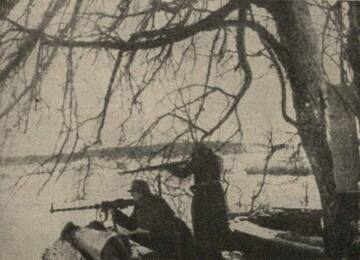
Kapitono Aleksandro Levingo prisiminimai apie žvalgybinę ekspediciją virš Ventos netoli Leno
1919 m. vasarį abiejose Ventos upės pusėse vyko aktyvi žvalgyba. Vienas iš žvalgybinių reidų vadų buvo kavalerijos divizijos viršininkas kapitonas Aleksandras Loevingas.
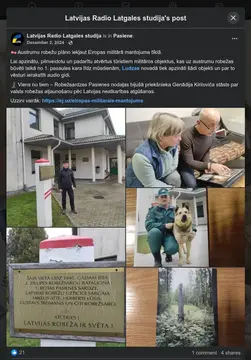
Genadijaus Kirillovičiaus pasakojimas apie Latvijos valstybės sienos sukūrimą po Latvijos nepriklausomybės atkūrimo
G. Kirilovičiaus pasakojimas apie Latvijos valstybės sienos nustatymą po Latvijos nepriklausomybės atkūrimo (interviu garso įraše, latvių kalba)

Sovietų lėktuvai subombardavo Riteli kapines
Ritelio kapinės iš tikrųjų buvo taikinio centre. Vietiniai gyventojai galėjo tik stebėti, kaip jos buvo naikinamos.
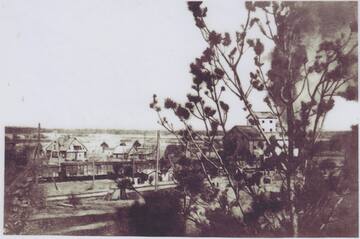
1949 m. netoli Skrundos stoties slapta nufotografuotas tremties traukinys
1949 m. kovo 25 d. Skrundos mokinys Elmārs Heniņš matė, kaip buvo išvežami jo klasės draugai. Jis pasiėmė fotoaparatą ir užlipo ant netoliese esančios kalvos esančios pušys, kad užfiksuotų, kas vyksta, o vėliau nuotraukas paslėpė.
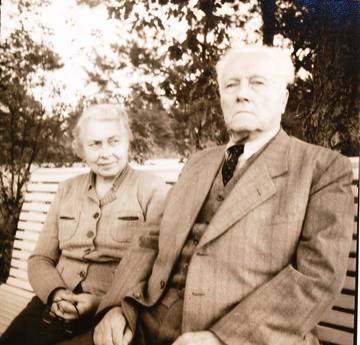
Generolo Janio Baložo gyvenimas po grįžimo iš tremties
Kai 1940 m. rusai bandė išspausti iš Latvijos vyriausybės palankią karinės bazės sutartį, kuri būtų beveik neįmanomą Latvijos armijos gebėjimą pasipriešinti Raudonajai armijai, generolas J. Balodis bandė gauti kai kurias sutarties pataisas. Tačiau tai nepavyko. Tačiau generolo priešininkai pasinaudojo šia aplinkybe, kad vėliau J. Balodį paverstų beveik išdaviku. Po konflikto su ministru pirmininku ir valstybės ministru K. Ulmaniu generolas 1940 m. balandžio 5 d. buvo atleistas iš karo ministro pareigų. Tuomet J. Balodis nusprendė dalyvauti Saeimos rinkimuose iš Demokratinio bloko, tačiau nieko iš to neišėjo, nes rinkimuose buvo leista dalyvauti tik vienam sąrašui – komunistų kandidatų sąrašui. Latvija tapo 14-ąja sovietine respublika.
Lyg antrąkart gimusi
1941 m. liepos ir rugpjūčio mėnesiais Kražiuose nacistinė valdžia išžudė beveik visą miestelio bendruomenę. Stebuklingai šią tragediją išgyveno Kražių geto kalinė, K.Požėlos vardo kolūkio kolūkietė Marytė Gerčienė.
Apgailėtinas įvykis Orikülos vadovybės centre
Pasak Raketų pajėgų majoro Sulevo Truuväärto, 1967 m. iš Orikülos diviziono buvo netyčia paleista priešlėktuvinė raketa.

Krasnoflotsko likimas po sovietų pasitraukimo
Po to, kai 1993 m. paskutiniai sovietų kariai paliko Latviją, Krasnoflotsko arba Olmanio pakrantės gynybos baterija taip pat atiteko Latvijos nacionalinėms gynybos pajėgoms. Netrukus šį našlaičių turtą pradėjo konfiskuoti pelno siekiantys žvalgytojai.

Suomijos jėgerių vėliavos pašventinimas Liepojos Šventosios Trejybės katedroje
Pirmoji Nepriklausomos Suomijos vėliava buvo pašventinta 1918 m. Liepojoje, Šventosios Trejybės bažnyčioje, kur suomių jėgeriai prieš išvykdami namo prisiekė ištikimybę teisėtai Nepriklausomos Suomijos vyriausybei.
"Gyvi nepasiduosime!": paskutinės valandos bunkeryje
1948 m. sausio 7 d. Milių kaimo miškelyje, Viekšnių valsčiuje, po ilgo pasipriešinimo žuvo du jauni partizanai - Pranas Šiuipys ir Albertas Švažas, atsisakę pasiduoti sovietų kariuomenei.
Medžioklė Saremoje
Saremoje lankėsi pasaulinio garso sovietų ir rusų šaulių ginklų inžinierius.
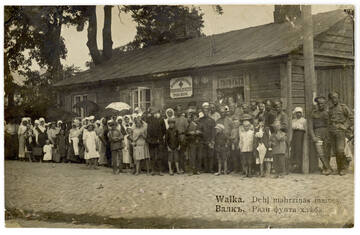
Iš Ádolfo Erso knygos „Vidzemė kovoje už laisvę“ apie pabėgėlių kelionę Valkoje
Nuo pabėgėlių laikų Valkai buvo skiriamas svarbesnis vaidmuo nei kitiems Vidžemės miestams, nes čia buvo leidžiamas politiškai aktyvus laikraštis „Līdums“, kuriame buvo kaldinami Latvijos dvasiniai ir politiniai ginklai, taip pat todėl, kad tai buvo kryžkelė, kurioje susitiko keliai iš trijų Latvijos pusių: iš Rygos, Alūksnės, Mozekilės, taip pat iš Estijos ir Rusijos. Ji turėjo ryšių su pabėgėliais iš visų pusių – Tartu, Pliskos, Maskvos ir Sankt Peterburgo. Čia buvo didelis pabėgėlių centras.

Šiaurės Latgalos išlaisvinimas nuo bolševikų
1918 m. gruodžio 1 d. Raudonosios armijos daliniai, sudaryti iš raudonųjų šaulių dalinių, įsiveržė į Latvijos teritoriją. Siekdami apsaugoti savo namus, šeimas, gimtąjį kraštą ir išvengti teroro, Balvių apylinkių vyrai griebėsi ginklų ir patraukė į miškus, prasidėjo pirmųjų „žaliųjų“ grupių formavimasis. 1919 m. pavasarį, paskelbus mobilizaciją, daugelis Balvių apylinkių vyrų laikė nepriimtiną kovą sovietinėje Latvijos armijoje ir prisijungė prie „žaliųjų“ grupių. Buvo suformuotos Balvių, Silakrogo, Rugėjų, Teteru-Dūrupės ir Liepnos grupės. „Žaliųjų“ grupių veikla Balvių apylinkėse suaktyvėjo 1919 m. kovo mėn.
Tukumo rezervinio aerodromo valdymas 1990-aisiais.
Pasitraukus sovietų okupaciniams daliniams, prasidėjo daugelio buvusių karinių bazių plėšimas. Sovietų kareiviai stengėsi kuo daugiau sunaikinti ir palikti infrastruktūrą apleistą. Kariuomenei pasitraukus, civiliai toliau plėšė šias bazes ir eksploatavo buvusią karinę infrastruktūrą.
J. Lukšos Daumanto atsiminimai apie partizanų Kalėdas
Atsiminimuose pasakojama apie šv. Kalėdų šventimą partizanų gretose, NKVD/MGB pastangas tuo pasinaudoti bei partizanų vadovybės pastangas juos apsaugoti.
Vyr. ltn. Budrevičiaus atsiminimai apie stojimą į Lietuvos kariuomenę ir pirmojo pulko formavimą
Atsiminimuose perteikiama potyris išgirdus apie Lietuvos nepriklausomybės paskelbimą, kariuomenės dalinių organizavimas ir kautynės su bolševikais.
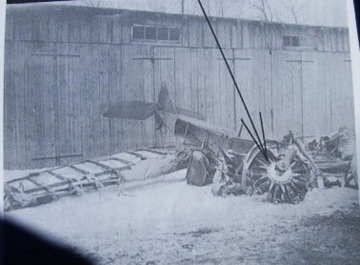
Apie numušto piloto kapą
Pirmajame pasauliniame kare masiškai buvo naudojamos naujos techninės priemonės (kulkosvaidžiai, nuodingosios dujos, tankai, povandeniniai laivai, artilerijos ugnies taktika, liepsnosvaidžiai, koviniai lėktuvai), o tai pasiekė precedento neturintį žmonių aukų lygį. Sakoma, kad paskutiniai riterių mūšiai vyko ore, nes tarp pilotų karaliavo abipusė pagarba ir nerašytos taisyklės. Karo pradžioje, kai lėktuvai dar nebuvo aprūpinti ginklais ir skraidė stebėjimo misijomis, priešingų pusių pilotai netgi sveikindavosi ore. Tačiau vėliau priešinga pusė pranešdavo priešininkę apie numuštus ar sučiuptus priešo pilotus, nuskrisdama į priešo aerodromą ir įmesdama raštelį į smėlio maišą ar net sučiuptų pilotų ataskaitą.
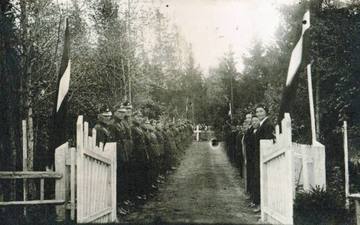
Suomijos savanorių pulko „Šiaurės berniukai“ mūšis Bejoje
1919 m. vasario 23 d. Suomijos savanorių pulko „Šiaurės berniukai“ žvalgybos dalinys, tikėdamasis gauti papildomų ginklų ir amunicijos, atvyko į Bejos mokyklos daubą, kur įvyko susidūrimas su bolševikais (Babeckos mūšis). Šiame mūšyje žuvo 10 Suomijos pulko kareivių.
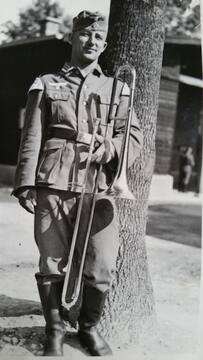
Dingę vokiečių kareiviai Kuršo mūšyje - Karlas Grimmas
Vokiečių armijos grupės „Šiaurė“, vėliau pervadintos „Kurlandu“ per Kuršo apgultį, įrašuose vis dar nėra aiškios informacijos apie maždaug 50 000 vokiečių kareivių. Šie kareiviai yra įtraukti į dingusiųjų sąrašą. Net ir šiandien šių kareivių giminaičiai bando rasti savo giminaičių ir protėvių pėdsakų Kurše – tiek dokumentinių, tiek fizinių. Viena iš tokių istorijų – Karlo Grimmo, vokiečių kareivio iš Švabijos (istorinio regiono pietvakarių Vokietijoje, prie Reino ir Dunojaus upių ištakų), kurio karo karjera nutrūko 1944 m. spalio 27 d. Krūmų namuose netoli Vainodės (5 km į šiaurės vakarus nuo Vainodės, Latvijoje).
Prisiminimai apie KGB kameras Tartu
Ülo Raidma, studentų pasipriešinimo organizacijos „Mėlyna-Juoda-Balta“ narys, prisimena laiką, praleistą kamerose.
Vietinės rinktinės formavimas 1944 m.
Plk. Oskaro Urbono pasakojimas apie Vietinės rinktinės formavimą 1944 m.
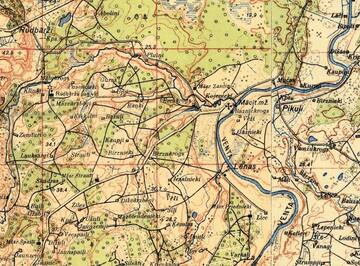
1-asis Latvijos atskirasis batalionas perplaukė Ventą 1919 m. kovo 3 d.
Vienas pagrindinių 1-ojo Latvijos atskirojo bataliono dalinių iššūkių buvo kirsti užšalusią Ventos upę ir nutiesti kelią per ją.
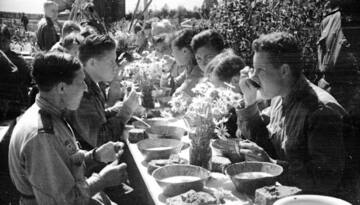
Jūlijaus Bērzinio liudijimas apie Raudonosios armijos 201-ąją (43-iąją gvardijos) Latvijos šaulių diviziją 1942–1945 m.
2011 m. rudenį aptikau Rusijoje gyvenančio latvio, buvusio Raudonosios armijos 201-osios (43-iosios gvardijos) Latvijos šaulių divizijos (toliau – 201-oji Latvijos šaulių divizija; divizija) kareivio Jūlijaus Bērzinio (1900–po 1963 m.) memuarus – 189 puslapių apimties istoriją, ranka rusų kalba parašytą dviejuose linijuotuose sąsiuviniuose Latvijos kareivio apie savo patirtį Vokietijos ir SSRS kare (1941–1945). Šie memuarai taip pat nebuvo užsakomieji darbai.
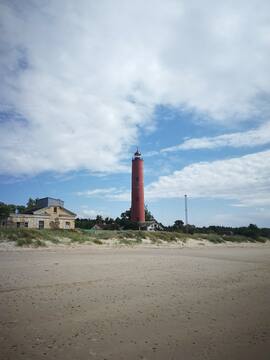
Akmenragso karinis kompleksas
Sovietmečiu Akmeņrage buvo karinis kompleksas.
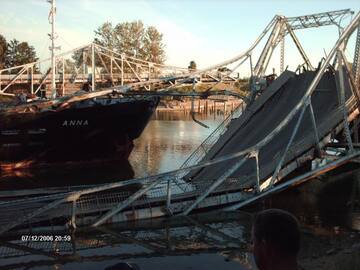
O. Kalpako tilto istorija
Per daugiau nei 100 savo gyvavimo metų tiltas išgyveno du karus ir skirtingus savininkus, o tai turėjo įtakos jo eksploatacijai. Tiltas buvo susprogdintas per Pirmąjį pasaulinį karą, tačiau po karo atstatytas, o 1926 m. jį vėl apgadino garlaivis „Narne“. Tiltas buvo atstatytas dar kartą, tačiau nukentėjo ir Antrojo pasaulinio karo metu, kai įsiveržusi sovietų armija apšaudė Liepojos uostą.
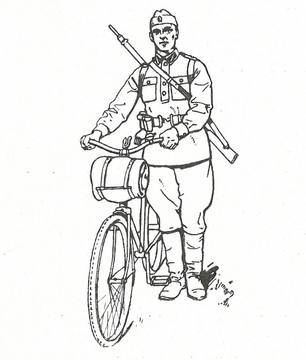
Specialūs nurodymai dviratininkų sveikatos priežiūrai
Dviratininkų rengimo nuostatuose nurodytos rekomendacijos skirtos Latvijos kariuomenės dviratininkų rengimui. Rekomendacijos daugiausia skirtos karių sveikatos klausimams.
Baskų kilmės pilotas Benito Aguirre
Pasakojimas apie baskų lakūną Benito Aguirre (teisingas pavadinimas Ignacio Aguirregoicoa Benito), kuris buvo numuštas virš Mustvee.
Netikras gintaras Liepojos pusėje
Jau daugiau nei dvidešimt metų Liepojos pakrantė yra pavojinga dėl dirbtinio gintaro, kurio jūra ypač gausiai išplauna iš savo gelmių per pavasario ir rudens audras.
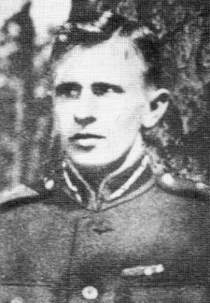
Apdovanojimo skyrimo šarvuoto traukinio vadui A. Klestrovui priežastys
Sėkmingai atremdamas priešo ataką, ginkluoto traukinio vadas A. Klestrovas žuvo, o pulkininkas Dankeris išdavė apdovanojimo pagrindą.
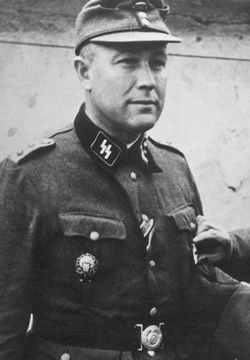
19-ojo artilerijos pulko vado kapitono Janio Ozolo sugebėjimai 3-iojo Kuršo mūšio metu
Kapitonas Jānis Ozols buvo Latvijos karininkas, Antrojo pasaulinio karo dalyvis, Trijų žvaigždžių ordino riteris, kurio artilerijos divizija neleido pralaužti fronto per Trečiąjį Kuršo mūšį.

Jekabpilio oro uostas
Jėkabpilio aerodromas yra vienas iš karinių aerodromų Latvijos teritorijoje, kuris buvo sukurtas Nepriklausomos Latvijos laikotarpiu apie 1935 m. Po antrosios Latvijos Respublikos okupacijos 1945 m. aerodromas buvo pritaikytas SSRS oro pajėgų poreikiams.
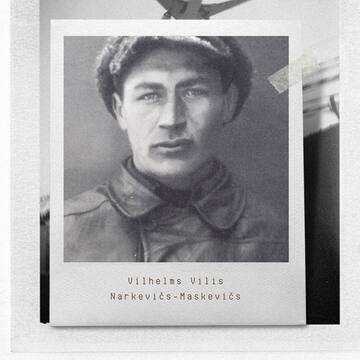
Vilio Narkevičiaus kovinės veiklos 1919 m. lapkričio 6 d. aprašymas
Būrio vado, leitenanto Juliaus Rosenthalio Vilio Narkevičiaus, kovinės veiklos aprašymas, 1921 m. lapkričio 3 d.
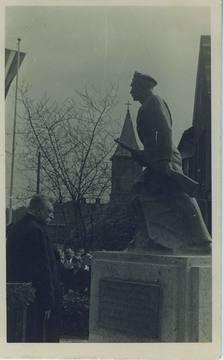
Neįprasta Cėsių pulko mokyklos kuopos paminklo istorija
1919 m. Cėsių mūšiuose dalyvavo Cėsių pulko savanorių moksleivių kuopa, kuri birželio 5 d. buvusios Cėsių vokiečių progimnazijos patalpose Dārza gatvėje (dabar Bērzaines gatvė 4) susiformavo kaip kovinis vienetas iš 108 jaunuolių iš Valmieros ir Cėsių mokyklų. Jau naktį iš birželio 5 į 6 d., maždaug po valandos vidurnakčio, buvo paskelbtas aliarmas ir kuopai buvo įsakyta užimti pozicijas. Kuopa išėjo į Mācītājmuižos – Meijermuižos liniją, kuri buvo laikoma svarbiausia mūšio vieta.

Latvijos kariuomenės generolo, dukart Lāčplėsio karo ordino kavalieriaus Pēterio Radzinio atminimui.
Generolas Pēteris Radziņš gimė Lugažių valsčiuje, Valkos rajone, paprasto ūkininko šeimoje, kur išmoko dirbti lauko darbus. Jis buvo labai protingas jaunuolis, baigęs mokyklą pasirinko karą ir taip pradėjo savo karinę karjerą, gelbėdamas Latviją nuo Bermonto kariuomenės. P. Radziņš buvo vienas iškiliausių Latvijos armijos karininkų, apdovanotas daugybe Latvijos ir užsienio ordinų bei atminimo ženklų.
Lietuviai gelbėtojai - Miriam Javnaitės-Voronovos išgyvenimo istorija
Antrojo pasaulinio karo metais Miriam Javnaitė-Voronova išgyveno Holokaustą dėka daugelio lietuvių, kurie, rizikuodami savo ir artimųjų gyvybėmis, slėpė, maitino ir globojo persekiojamus žydus.
Pasakojimas apie partizanės Emilijos (Emos) Lajunienės gyvenimą
Istorija pasakoja moters partizanės apsisprendimo tapti partizane, prisijungimo prie partizanų būrio ir galiausiai suėmimo istoriją.
Rygos getas ir Holokaustas
Sąmoningai buvo pasirinkti trijų skirtingų žmonių memuarų fragmentai, leidžiantys atidžiau pažvelgti į Holokausto nusikaltimą iš skirtingų perspektyvų.
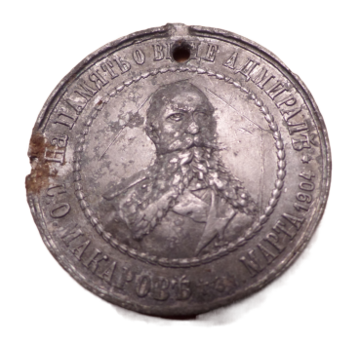
Kieme rastas admirolui Makarovui skirtas atminimo ženklelis.
Mažas karinis reliktas gali papasakoti didžiulę istorinę istoriją. Ir nors ženklelis simbolizuoja įvykius, vykusius Rusijos-Japonijos karo metu, jis taip pat atskleidžia spalvingą karinę istoriją ir mūsų Latvijos šaulių dalyvavimą kituose kariniuose konfliktuose tiek prieš Nepriklausomybės karus, tiek po jų.
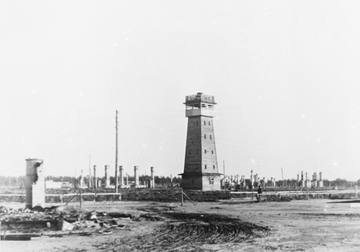
Apie Salaspilio memorialą kaip sovietinio okupacinio režimo ideologijos simbolį.
Aprašyme vaizdžiai aprašomas memorialinės vietos politizavimo mastas ir jos vaidmuo Sovietų Sąjungos ideologijoje. Tekste minima, kad vienas iš pagrindinių tikslų – kova su „fašizmo atgimimu“. Tai rodo, kad ideologinė infrastruktūra ir toliau naudojama komunistų nusikaltimams slėpti ir kitaip mąstančiųjų nuomonei uždrausti. Memorialinės vietos, sovietų armijos kapinės ir muziejai, įvairūs kultūriniai renginiai palaikė „Latvijos išvadavimo“ ir „broliškos Sovietų Sąjungos“ mitą. Nacių nusikaltimų faktai buvo panaudoti kuriant iškreiptą Antrojo pasaulinio karo įvykių Latvijoje vaizdą.
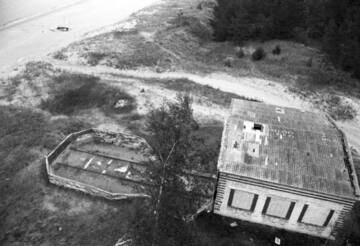
Prisiminimai iš pasienio zonos
Įvairios scenos iš gyvenimo sovietmečiu, kaip jas prisimena rašytojas, prozos ir poezijos autorius Gunārs Anševicas, gyvenęs pasienio zonoje.
Motinos diena
Sovietų Sąjungos laikais santuokos buvo registruojamos Kingisepo miesto Gyvenamosios statistikos įstaigoje.

Pēteris Supe – Latvijos nacionalinės partizanų asociacijos įkūrimo iniciatorius
Nuo 1944 iki 1946 metų Pēteriui Supei pavyko suvienyti miškuose išsibarsčiusius nacionalinių partizanų būrius į organizuotą judėjimą, kuris po Antrojo pasaulinio karo dar kelerius metus tęsė kovą prieš Latvijos okupaciją Abrenės apskrityje. Pēteris Supe, pravarde „Cinītis“, buvo vienas iškiliausių Šiaurės Latgalos nacionalinio partizanų judėjimo organizatorių ir vadovų.

Peleninė su panteros galva iš vokiečių įtvirtinimų linijų
Krotės apylinkėse buvo įsikūrusios paskutinės armijų grupės „Kurzeme“ įtvirtinimų linijos, kuriose rasta daug su Antruoju pasauliniu karu susijusių objektų.

Paminklai Lietuvos Nepriklausomybei. Roberto Antinio sukurtų paminklų istorijos: (II) sovietmetis
Didesnioji dalis tarpukaryje pastatytų Nepriklausomybės (su Lietuvos valstybingumu ir kovomis už jį susijusių) paminklų sovietmečiu kaip ideologiškai pavojingi ar netinkami buvo sunaikinti. Okupantai naikino ne tik žmones, bet ir atmintį bei atminties ženklus. Tokio likimo susilaukė ir skulptoriaus Roberto Antinio sukurti monumentai.

Neteisminis civilių šaudymas Liepojos „Mėlynajame stebukle“
Neteisminiai žudymai Latvijos teritorijoje karo metu, 1941 m. birželio pabaigoje ir liepos pradžioje, buvo paskutinė represijų ir smurto apraiška pirmajame komunistinės okupacijos etape, kuris baigėsi nacistinės Vokietijos kariuomenės įžengimu į visą Latvijos teritoriją.
Sušaudymo priežastis buvo siaubinga ir tragiška – kalinių nebebuvo galima perkelti į Rusiją, bet nebuvo leista jų palikti gyvų. Dėl to karo metu Liepojoje taip pat vyko neteisminiai gyventojų sušaudymai, panašiai kaip Rygos centriniame kalėjime, Valmieros kalėjime, Valkos ir Rėzeknės milicijose bei Greizo kalne netoli Ludzos. Liepojoje šis sovietų okupacinės valdžios nusikaltimas buvo įvykdytas „Mėlynajame stebukle“ – Liepojos milicijos pastate, Respublikos gatvėje 19.
Sääre pakrantės gynybos baterija Nr. 43
Jau 1907 m. Rusija pradėjo ruoštis plėtoti priešakines gynybines pozicijas savo sostinės Sankt Peterburgo atžvilgiu.
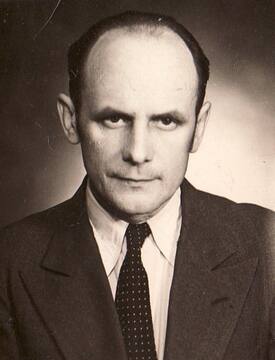
Valdemāro Ģinterio slapta ir pavojinga veikla
Valdemāro Ģinterio vardas buvo paskutinė viltis daugeliui Latvijos pabėgėlių pabėgti į Švediją. Per didelis pabėgėlių dėmesys buvo pavojingas, todėl Ģinteris jį laikė paslaptyje.
Salantų žydų moterų žudynės Šateikių miške
1941 m. vasarą Šateikių miške įvykdytos žydų moterų ir vaikų žudynės, kurias organizavo vietos policija ir baltaraiščiai. Į žudynių vietą aukos buvo vežamos iš Salantų, o prieš sušaudymą joms liepta nusirengti ir šokti į iškastą duobę. Skirtingų šaltinių duomenimis per šias egzekucijas nužudyta nuo 95 iki 230 žmonių, daugiausiai moterų ir merginų.
Nepriklausomybės kovų savanorio Antano Andriuškevičiaus stojimo į Lietuvos kariuomenę atsiminimai
Atsiminimuose reprezentuojamas atsisveikinimas su namiškiais, kelionės į karinį dalinį bei pirmųjų dienų kariuomenėje patirtys.
Sedos kautynės: bėgimo ir žūties istorija
1944 m. kautynėse prie Sedos buvo patirta ne tik didvyriškų momentų, bet ir paniško bėgimo epizodų, kai kariai, matydami artėjančią pralaimėjimo grėsmę, bandė gelbėti savo gyvybes.
Viena diena partizanų bunkeryje
Partizano Liongino Baliukevičiaus Dzūko dienoraštyje rašoma apie gyvenimą partizanų bunkeryje, šiame pasakojime atskleidžiama, kaip atrodė viena partizanų diena.

Hugo Legzdziņš, pirmojo Latvijoje povandeninio laivo „Ronis“ kapitonas
Latvijos pirmojo povandeninio laivo „Ronis“ kapitonas Hugo Legzdziņšas, „Ronis“ komandos suėmimas
Tisos raketų bazė
Tisos raketų bazė buvo viena iš slaptų SSRS strateginių karinių bazių, kurioje buvo dislokuotos R12 balistinės raketos.
7 pėstininkų pulko eil. Kazio Petriko atsiminimai iš Širvintų kautynių
Autentiškas liudijimas apie Širvintų kautynes, kuriame perteikiama jų dalyvio perspektyva bei pabrėžiama pakili laimėjimo nuotaika.
Pakrantės baterija ties Olmani
Į šiaurę nuo Ventspilio yra dar viena svarbi pakrantės baterija. Ji buvo įsikūrusi Olmaņi ir vadinosi „Krasnoflotskaja“.
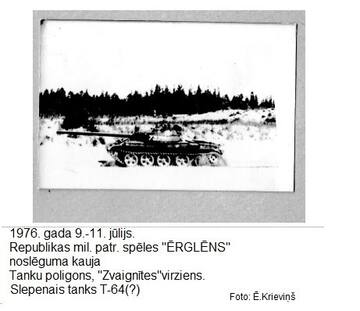
1976 m. liepos mėn. karinės-patriotinės žaidynės „Orlenok“ tankų poligone netoli Irbenės
1976 m. liepos mėn. karinės-patriotinės žaidynės „Orlenok“ tankų poligone netoli Irbenės, kuriose dalyvavo 17-metis Evaldas Krievinis ir slapta fotografavo žaidynes, įrangą ir net Irbenės anteną fotoaparatu „Sme8M“.
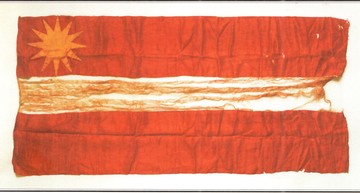
Jānis Lapiņš ir pirmasis Latvijos raudonos, baltos ir raudonos vėliavos projektas
Latvijos nacionalinės vėliavos sukūrimas vyko Pirmojo pasaulinio karo metais. 1915 m., kuriant Latvijos šaulių batalionų vėliavas, pavieniai menininkai siūlė raudonas, baltas ir raudonas vėliavų spalvas. Po pedagogo ir žurnalisto Janio Lapinio sumanymo, raudonai baltai raudoną vėliavą 1916 m. antroje pusėje pagamino jo mokinė, Valmieros pabėgėlių prieglaudos mokytoja Marianna Straumane. Tai pirmoji žinoma ir iš tikrųjų pagaminta Latvijos nacionalinė vėliava, kuri taip pat išliko iki šių dienų.
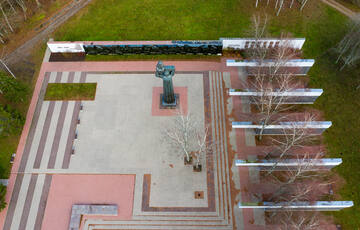
„Karas nesibaigia, kol nepalaidotas paskutinis kareivis“ (Priekulės brolių kapinės)
Kuržemė kaip atskiras ir izoliuotas mūšio laukas tapo 1944 m. spalio 10 d. Apie 500 000 vokiečių kareivių buvo laikomi apsuptais. Remiantis 1-ojo Baltijos fronto štabo pranešimais, norint visiškai išlaisvinti visą Baltijos pakrantę, reikėjo tik „nedidelių pastangų“. Tačiau kovos Kuržemėje tęsėsi dar septynis mėnesius ir Kuržemė tapo Antrojo pasaulinio karo pabaigos simboliu.
Per septynis kovų mėnesius iki 1945 m. gegužės mėn. Vokietijos ginkluotosios pajėgos Kurše neteko 154 108 žuvusių, sužeistų ir dingusių be žinios kareivių, o Raudonosios armijos nuostoliai siekė apie 400 000 žuvusių, sužeistų arba dingusių be žinios kareivių.
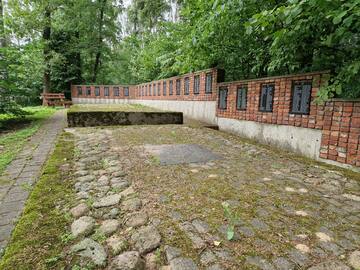
Plungės žydų likimas
1941 m. vasarą Plungėje buvo žiauriai sunaikinta beveik visa vietos žydų bendruomenė daugiau nei 1800 žmonių. Žmonės buvo kalinami baisiomis sąlygomis, marinami badu ir galiausiai sušaudyti Kaušėnų miške. Masines žudynes vykdė vietiniai kolaborantai.
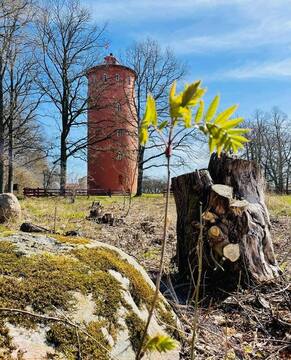
Slīterės netikras švyturys
Karų metu buvo naudojami įvairūs metodai priešui apgauti. Jūroje laivams apgauti buvo sukurti netikri navigacijos ženklai, vienas iš kurių galėjo būti Slīterės švyturyje.
Pastangos užkirsti kelią Kegumo HE sprogimui
Antrojo pasaulinio karo metu, armijoms traukiantis, Latvijoje buvo susprogdinta daug kariniu ir logistiniu požiūriu svarbių objektų, kad šie ištekliai neliktų priešui. Tokie objektai buvo ir Kegumo apylinkėse, kur vienas svarbiausių objektų yra Kegumo HE, kuri, jos darbuotojų pastangų ir pastangų dėka, nebuvo visiškai sunaikinta.
Olevo Metsmaa prisiminimai
Papisaar saloje buvo pastatyta hidroplanų bazė, o Kiirasaar saloje – priešlėktuvinės baterijos.
Partizanavimas Lietuvos ir Latvijos pasienyje
Pasakojama apie partizanų gyvenimą žiemą, klajojimą tarp Lietuvos ir Latvijos bei sužeistųjų partizanų globą.
Kolkos pasienio zonos prisiminimai
Kolkės gyventojos Birutos Freimanės prisiminimai apie pasienio zoną.
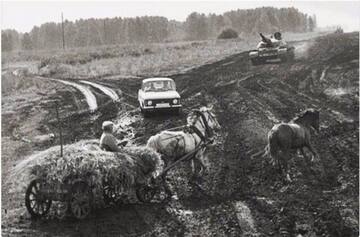
Tankų užmėtymas akmenimis
Sovietmečiu visa Kuržemės pakrantė buvo uždara zona. Vaikai, gyvenę netoli sovietų armijos dalinio Targalės valsčiuje, įskaitant Oviši, smagiai leisdavo laiką mėtydami akmenis į tankus.
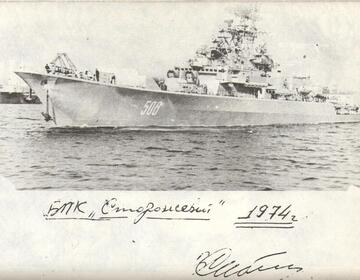
Maištas karo laive "STOROZHEVOYA"
1975 m. lapkričio 8 d., kaip ir įprasta SSRS, Rygoje vėl įvyko didelis bolševikų revoliucijos metinių minėjimas. Niekas, net ir baisiausiuose košmaruose, negalėjo įsivaizduoti, kad 58-osios revoliucijos metinės į Latvijos ir SSRS istoriją įeis kaip kažkas precedento neturinčio ir neregėto – maištas dideliame kovos su povandeniniais laivais laive „Storoževoj“. 15 metų SSRS neigė, kad laive būtų kilęs maištas.

JAV CŽV desantininkas Leonidas Zariņšas – „netinkamas verbuoti“ Čekos.
Leonidas Zariņšas buvo užverbuotas CŽV agentu JAV ir 1953 m. lėktuvu iš Vokietijos kirto SSRS sieną bei nusileido parašiutu netoli Aucės. Deja, vienas iš kontaktų, su kuriais jis turėjo susisiekti, pasirodė esąs dvigubas agentas, todėl Leonidas netrukus buvo suimtas. Jis atsisakė bendradarbiauti su čekistais ir 1954 m. buvo sušaudytas be teismo.
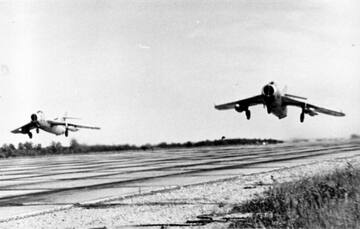
Ar Tukumo aerodrome buvo palaidotos branduolinės galvutės?
Buvęs gvardijos vadas Aivaras Skurstenis atvirai pasikalbėjo su Tukumo rajono laikraščiu „Neatkarīgās Tukuma Ziņas“. Jis kadaise buvo atsargos karininkas ir lauko sargybinis, kuriam 1993 m. buvo pasiūlytas sargo darbas Laimonio Mucenieko vadovaujamoje žemės ūkio bendrovėje „Durbe“. Ten jam teko saugoti biurą – Lyvanų namą. Taip prasideda istorija.

Sparnuoti kareiviai
XX amžiaus pradžioje pašto balandžiai buvo plačiai naudojama bendravimo priemonė.
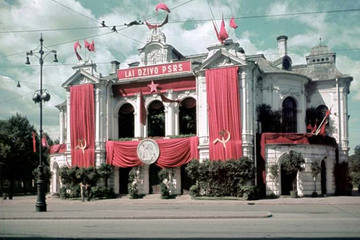
Dėl Latvijos okupacijos
1940 m. nepriklausomos Latvijos valstybės egzistavimą nutraukė Sovietų Sąjungos okupacija ir aneksija, arba inkorporacija, į Sovietų Socialistinių Respublikų Sąjungą (SSRS).
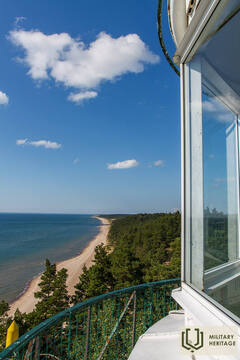
Užavos pakrantės ir sovietinių pasieniečių gamtos nuotraukos
Saugomo augalo nuotraukos pasienio apsaugos zonoje istorija.
Priverstinis darbas Jalakos linijoje
Kaip 1941 metų vasarą Jalakos linijoje buvo iškasti prieštankiniai apkasai, siekiant apsisaugoti nuo vokiečių puolimo.
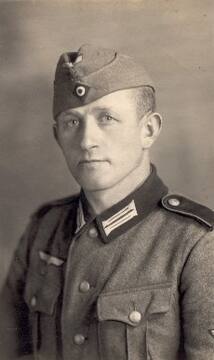
Kuršo mūšių metu dingę vokiečių armijos kareiviai - Hermanas Faulsas
Vokietijos armijų grupės „Šiaurė“, kuri vėliau, per Kuržemės apgultį, buvo pervadinta į „Kurlandą“, dokumentuose vis dar nėra aiškios informacijos apie maždaug 50 000 Vokietijos armijos kareivių. Šie kareiviai įtraukti į dingusių be žinios kovų metu sąrašą. Net ir šiandien šių kareivių giminaičiai bando Kuržemėje rasti savo giminaičių ir protėvių pėdsakų – tiek dokumentinių, tiek fizinių. Viena iš tokių istorijų yra apie Hermaną Faulą, kuris dingo nuo 1944 m. gruodžio 27 d. – 3-iojo Kuržemės mūšio, arba Kalėdų mūšių.
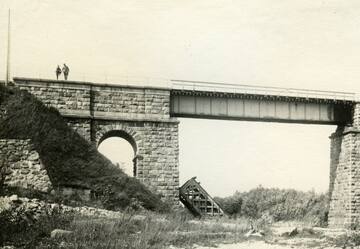
Cėsių mūšis Amatos upės pakrantėje
Prie tilto per Amatą vokiečių landesveras puola deryboms atvykusį estų šarvuotą traukinį. Estai pradeda kontruguoti, vokiečiai atremiami, ir šarvuotas traukinys grįžta į Cėsį.

Kolkos pakrančių apsaugos apžvalgos bokštas
Paskutinėse Kolkos rago pušyse pasislėpęs pasienio apsaugos bokštas, kuriame sovietmečiu nuolat buvo įsikūręs pasienio apsaugos postas, o šalia jo stovintis nedidelis akmeninis pastatas dabar apleistas ir griūva.
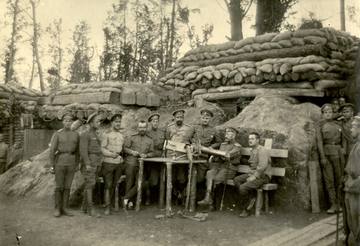
Gynybinių pozicijų kūrimas.
Aprašyme nagrinėjamos mūšio lauko įtvirtinimų problemos apskritai. Jis grindžiamas Pirmojo pasaulinio karo patirtimi ir situacija, kai reikėjo organizuoti didelius įtvirtinimų kūrimo darbus.
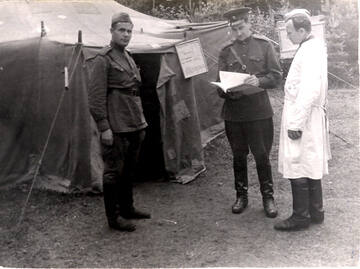
K. Meškausko prisiminimai apie Plungės rajono raketų bazes
Plungės rajone buvusios raketinės bazės, slepia įspūdingą šaltojo karo istoriją – nuo slapta naktimis gabenamo raketinio kuro iki požeminių šachtų statybos su dirbtiniu slėgiu. Gydytojo Kajetono Meškausko prisiminimai atskleidžia mažai žinomas detales apie sovietų kariuomenės veiklą ir statybininkų gyvenimą. Jo pasakojimas – ne tik apie bazę, bet ir apie žmogų, kuris atsidūrė istorijos viduryje.
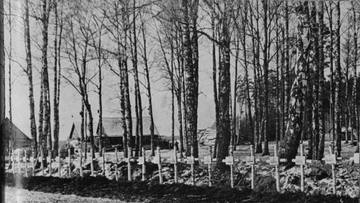
Mūšiai Kuršo tvirtovėje netoli Lestenės
Pasakotojas aprašo savo įspūdžius apie mūšius Lestenės apylinkėse ir Latvijos 19-osios divizijos vaidmenį mūšiuose.
Prisiminimai iš dienoraščio, palikto tarnaujant Kegumo HE
Jānis Jaunozoliņš. „Prisiminimai iš dienoraščio, palikto svetur“ (1944 08 16-1946 10 13.) Fragmentai.

Pulkininko Oskaro Kalpako didvyriškumas Skrundos mūšyje
Pulkininkas Oskaras Kalpakas pelnė savo karių pagarbą asmeniniu pavyzdžiu ir padrąsinimu.
Gyvenimo sąlygos Maantee rajone
Maantee kaimo karinis dalinys buvo įsikūręs beveik pasaulio gale, net žiūrint iš Kuresarės.

Artūro Ozolo prisiminimai apie laivą „Saratov“
Artūras Ozolas baigė Rygos politechnikos institutą ir tarnavo Rusijos Juodosios jūros laivyne karininku (mičmanu) ir inžinieriumi karo laive „Panteleimon“. Latvijos išsivadavimo kovos metu jis įstojo į Studentų kuopą. Liepojoje jis pradėjo eksploatuoti laivą „Saratov“. Artūro Ozolo atsiminimai apie laivą „Saratov“ buvo publikuoti Daugagavos Vanagi mėnesiniame leidinyje.

Lietuvos Savanoriškosios krašto apsaugos tarnybos pajėgos ir Rugpjūčio pučas (1991)
1991 m. sausio 17 d. įkurta Lietuvos Respublikos Savanoriškoji krašto apsaugos tarnyba. Rugpjūčio pučo metu tarnybos kariams patikėta saugoti valstybinius objektus. Neišvengta aukų.
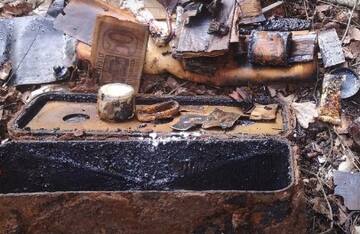
Legionieriaus Andrejaus Apsīčio palikimas Remtės girioje
Kuržemės miškuose kartkartėmis aptinkama Antrojo pasaulinio karo įrodymų, nes karo relikvijų ir istorinių senienų entuziastai labai dažnai lankosi Kuržemės miškuose ir laukuose su metalo detektoriais. 2021 metų pradžioje Salduso savivaldybės Remtės pusėje miške užkastoje šaudmenų dėžėje buvo rasti įvairūs dokumentai, patvirtinantys priklausymą Latvijos legiono 19-ajai divizijai, taip pat kareivio asmeniniai daiktai. Jie žemėje pragulėjo 76 metus.
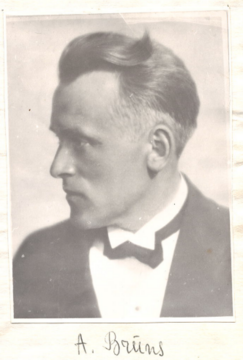
Vokiečių armijos divizijos štabo požeminis bunkeris netoli „Sirsniņi“ namo Pampalyje
Alfredo Brauno pasakojimas apie vokiečių štabą jo gimtųjų namų kieme, kur vokiečių kareivis, prisidengdamas naktimi, vedė Alfredą užrištomis akimis, nežinodamas, kad šis namas yra jo gimtasis namas ir Alfredas net užmerktomis akimis pažinojo kiekvieną akmenį kieme.
Apie Latvijos Nepriklausomybės karą ir 1918 m. įvykius Alūksnėje
1918 m., kai vokiečių kariuomenė įžengė į Alūksnę, Latvijos šaulių batalionai atsitraukė į Sovietų Rusiją. Iki 1918 m. gruodžio pradžios buvo įtvirtintas vokiečių režimas ir vykdomos reorganizacijos. Vokietijai kapituliavus kare, bolševikai grįžo į Alūksnę ir atkūrė savo valdžią. Suomijos savanoriai taip pat kovojo Estijos armijos sudėtyje Latvijos Nepriklausomybės kare. 1919 m. vasario 21 d. Alūksnėje, netoli stoties, vyko įnirtingi mūšiai tarp bolševikų ir Suomijos savanorių pulko „Šiaurės berniukai“.
Karo laivo Prezidentas Smetona pasitraukimas iš Klaipėdos 1939 m.
Atsiminimuose pasakojama apie Vokietijos kariuomenės įžengimą į Klaipėdos kraštą, bei Lietuvos karo laivo „Prezidentas Smetona“ pasitraukimas iš Lietuvos.
Aktoriaus Harijaus Liepinio prisiminimai apie tarnybą Vokietijos armijoje
Vėliau išpopuliarėjęs aktorius Harijs Liepiņš buvo pašauktas į Vokietijos armiją ir 1944 m. rudenį išsiųstas į Kegumą.
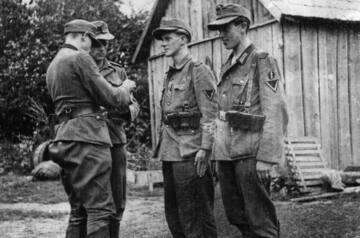
Vokiečių armijos kapralo Felkerio pasakojimas apie žvalgybos mūšį 1944 m. lapkričio 8 ir 9 d. Selješų namuose Zvardėje
Felkeris (vok. Völcker) buvo 20 metų vaikinas, tarnavęs nacistinės Vokietijos armijos žvalgybos skyriuje, pasakojantis lapkričio 8 ir 9 d. įvykius, kurie ryškiai atspindi fronto įvykius Zvārdėje, kur fronto linija 4 mėnesius judėjo pirmyn ir atgal, taip pat ir Ķērklinių bažnyčios apylinkėse.
Vyskupo Heinricho III pasmaugimas
1381 m. pilyje savo galą sutiko 80-metis Saare-Lääne vyskupas Heinrichas III.
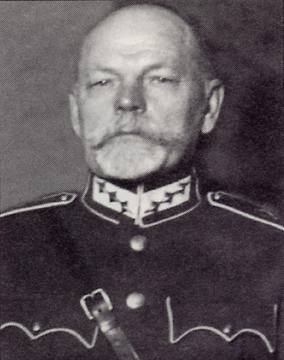
Apie pirmąjį Latvijos armijos vyriausiąjį vadą Dāvidą Sīmansoną
Knygos „Latvijos armijos vadai“ esė įtikina, kad istorijai didelę įtaką daro konkretūs asmenys. Nors svarbiausių istorinių įvykių epicentre jie buvo trumpą laiką, tikri Latvijos patriotai, turėdami didelę karinę patirtį, sugebėjo daug nuveikti formuojant ir stiprinant Latvijos kariuomenę bei istorinių įvykių lūžio taškuose.
Ši istorija yra apie pirmąjį Latvijos armijos vyriausiąjį vadą Dāvidą Sīmansoną (1859–1933).
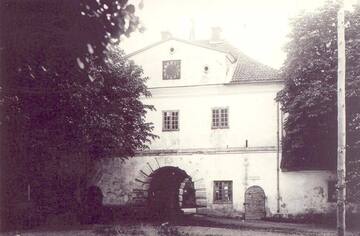
Devyniolikmetės Raisos Ahmedejevos pasakojimas apie žvalgybinį mūšį 1945 m. vasario 14 d. netoli Priekulės
Baškirijoje gimusio Raudonosios armijos kareivio Raiso Ahmadejevo (19 m.) pasakojimas apie sovietų armijos pasiruošimą puolimui prieš Priekulę ir žvalgybinį mūšį Piekulėje 1945 m. vasario 14 d.
Bandymas pabėgti iš SSRS
Jaunimas ir užsieniečiai, nepažįstantys sovietinių laikų, sunkiai patikėtų, kad sovietų piliečiui buvo praktiškai neįmanoma legaliai išvykti iš SSRS.

Embutės bažnyčios sienos – Antrojo pasaulinio karo liudininkai
Embutės bažnyčia yra vienas ryškiausių Antrojo pasaulinio karo liudininkų Kuržemėje. Ant bažnyčios sienų ir varpinės vis dar galima pamatyti artilerijos ir kitų sviedinių pėdsakų. Vokiečių armija bažnyčią (kaip ir daugelį kitų Kuržemėje ir kitur) naudojo neįveikiamiems gynybiniams tikslams. Dėl to bažnyčia buvo sugriauta ir nebuvo atstatyta nuo sovietmečio.
Sulev Truuväärt prisiminimai
Dejeve tarnavęs salos gyventojas majoras Sulevas Truuväärtas prisiminė, kad jo metu dalinyje žuvo vienas kareivis.
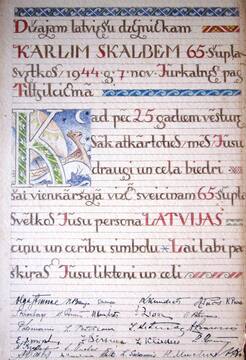
Paskutinė Kārlio Skalbės gimtadienio šventė Kuržemės pajūryje
1944 m. lapkričio 7 d. Latvijos pabėgėlių gyvenvietėje Kuržemės pakrantėje vyravo šviesi nuotaika, kai Jūrkalnės „Laukgaļi“ vykę poeto Kārlio Skalbės 65-ojo gimtadienio minėjimai. Vos po keturių dienų Kārlis Skalbė laivu išplaukė į Švediją kaip pabėgėlis. Tą dieną Kārlis Skalbė paskutinį kartą atšventė savo gimtadienį.
Devynmetės kelionė į tremtį
Rašytoja Regina Guntulytė-Rutkauskienė, ištremta būdama devynerių metų, prisimena 1941 m. birželio 14-osios trėmimą, kai su šeima buvo išvežta į Sibirą. Jos pasakojimas atskleidžia ne tik fizinį, bet ir emocinį tremties skausmą, kuris lydėjo net ir grįžus į Lietuvą.
Tartu švenčia 1919 m. pergalę Tähtverėje
Estijos nepriklausomybės karo metu 1919 m. sausio mėn. vykusio Tähtverės mūšio, kurio metu Estijos kariuomenė išvadavo Tartu nuo Raudonosios armijos, aprašymas.
70 Kalevipoego metų. Ar pagaliau Kalevipoegas grįš namo?
Pasakojimas apie nuotaikas Tartu ir tarp studentų iškart po to, kai 1950 m. buvo nuversta Kalevipoego statula.
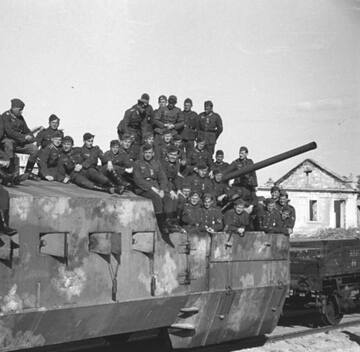
Paskutinis Vokietijos armijos 3-iojo šarvuoto traukinio mūšis Vainodės stotyje
1944 m. spalį vokiečių armija traukiasi. Trečiasis šarvuotasis traukinys atvyksta į Vainodės stotį.
Žlugus vokiečių frontui, rytiniuose Vainodės pakraščiuose buvo tik nedideli vokiečių 61-osios pėstininkų divizijos daliniai, remiami šarvuoto traukinio. Pasipriešinimas buvo greitai įveiktas ir spalio 9 d. vakare visą Vainodę visiškai kontroliavo Raudonoji armija.
Vokietijos armijos šarvuoto traukinio Nr. 3 vado ataskaita atspindi įtemptus tų dienų įvykius ir šarvuoto traukinio Nr. 3 praradimą.
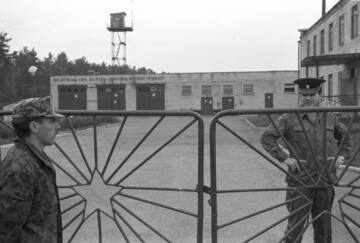
Apie Košradzniekų santykius su sovietų kareiviais
Imanto Upnerio prisiminimai apie sovietmetį.
Pasienio režimo zonos kirtimas
„Propuskas“ arba leidimas kirsti pasienio režimo zoną buvo toks pat privalomas kaip autobuso bilietas.

Zlēkų tragedijos vieta Latvijos istorijoje vis dar neaiški.
Antrojo pasaulinio karo metu, kai didžiąją Latvijos dalį jau kontroliavo Sovietų Sąjunga, o Kuržemę valdė Hitlerio vokiečių vietininkai, vadinamieji kureliečiai Kuržemėje pradėjo kovą už Latvijos valstybinės nepriklausomybės atkūrimą.
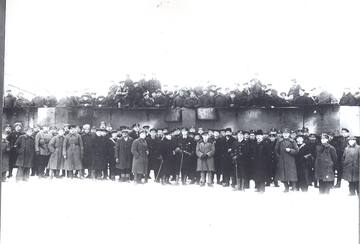
Latvijos armijos šarvuotasis traukinys Nr. 5 arba „Kolpaks“
Latvijos armijos šarvuotasis traukinys Nr. 5 arba „Kalpaks“ buvo lengvasis šarvuotasis traukinys, naudotas Latvijos ginkluotosiose pajėgose 1919 m.

Sovietų agresija: Lietuvos pasienio kontrolės postų užpuolimai 1990–1991 m.
1990 m. Lietuvai atkūrus Nepriklausomybę ir pradėjus saugoti valstybines sienas, susidurta su sovietinių jėgų struktūrų išpuoliais, pareikalavusiais ne vieno Lietuvos pareigūno gyvybės.
Galvijai Piiri raketų bazėje
Vietinė karvių ganykla buvo netoli raketų bazės.
Kaimri gynybos linijos pabaiga
1941 m. rugsėjo 16 d., sėkmingai puoliant vokiečių kariuomenės Muhu ir Saremos salose, buvo pradėti gynybinės linijos tarp Lõpe, Teesü ir Kaimri kaimų įrengimo darbai.
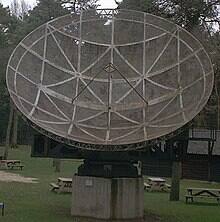
Vokietijos armijos radaro postas Ulmalėje
Vokietijos ginkluotosios pajėgos keliose vietose dislokavo radarus, kurie leido daug anksčiau nustatyti priešo aviacijos veiklą Kuržemės regione.
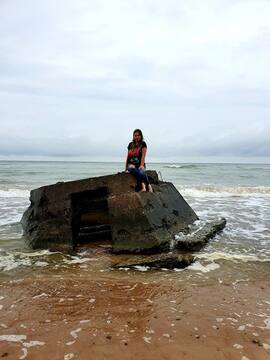
Vokietijos armijos radaro postas Jūrkalnėje
Siekdamos apsaugoti Kuržemės pakrantę nuo galimo sovietų ar net Vakarų sąjungininkų išpuolio, Vokietijos ginkluotosios pajėgos keliose vietose dislokavo radarus, kurie leido daug anksčiau nustatyti priešo oro veiklą. Viena iš jų buvo įrengta Jūrkalnėje.
Partizano priesaikos tekstas
Lietuvos gyventojai tapdami partizanais prisiekdavo pagal šį priesaikos tekstą.

Jungtinės aviacijos diena – tikra nacionalinė šventė
Pasakotojas aprašo vieną populiariausių ir gausiausiai lankomų Latvijos renginių – Aviacijos festivalį Spilvėje. Jis apibūdina festivalio eigą ir mastą. Jis pabrėžia aviacijos populiarumą Latvijoje.
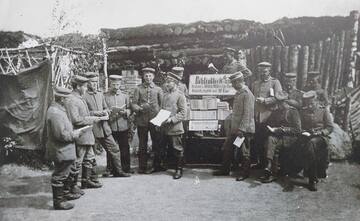
Apie požeminį miestą Egipte ir Sodiškes
1915 m., kai vokiečių kariuomenė įžengė į Latvijos teritoriją, pirmasis karo etapas pasižymėjo manevriniu karu. 1915 m. rudenį, frontui stabilizavusis ties natūralia Dauguvos kliūtimi, prasidėjo pozicijų karas, trukęs dvejus metus – iki 1917 m. rudens, kai vokiečių armija, pasinaudodama revoliuciniais pokyčiais Rusijos imperijoje ir Rusijos armijos demoralizacija bei žlugimu, perėjo į puolimą.
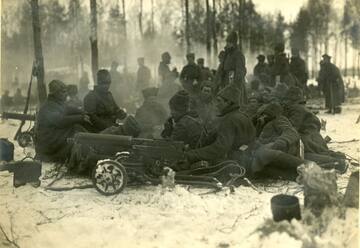
Dienoraščio įrašas apie akimirką, kai kareiviai sužino apie pasiruošimą Kalėdų mūšiams.
Latvijos šauliai ir jų karininkai apie mūšio pradžią buvo informuoti paskutinę akimirką. 5-ojo Žiemgalos latvių šaulių pulko puskarininkis Rūdolfas Ivanovas savo dienoraštyje aprašė paskutinį vakarą prieš mūšio pradžią. Trumpas, bet ryškus ir autentiškas tekstas, kuriame parodyta labai svarbi kareivio akimirka – sužinojimas apie mūšio dieną.
Šarnelės kaimo gyventojų žygdarbiai
Antrojo pasaulinio karo metais dvi Šarnelės kaimo šeimos – Striaupiai ir Kerpauskai – nepaisydamos mirtino pavojaus gelbėjo žydų gyvybes. Striaupių šeima išgelbėjo net 26 žmones, tarp jų – devynias šeimas, o Kerpauskų sodybos miške buvo įrengta slėptuvė Alsėdžių žydo kailiadirbio šeimai.
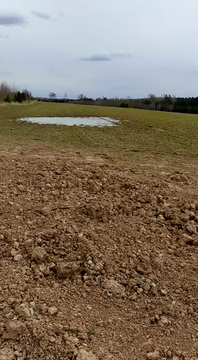
Mūšiai Kaulačių dvare 1945 m. kovą
1945 m. netoli Kaulačio pusdvaro buvo Raudonosios armijos stebėjimo postas. Liudininkai prisimena, kad kovos prasidėjo 1945 m. kovą. Tai ne pirmas kartas, kai šiame lauke randami Antrojo pasaulinio karo laikų kapai.
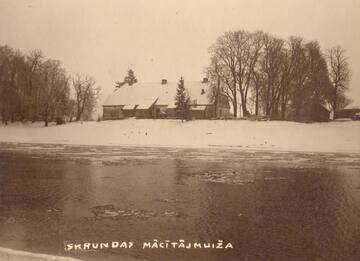
Skrundos mokyklos mūšis 1919 m. sausio 22 d.
Vado leitenanto Janio Ķīselio prisiminimai apie kautynes Skrundos mokykloje 1919 m. sausio 22 d.

Apie Kolkos pakrantės pasienio apsaugos tarnybą
Kolkės gyventojos Valijos Laukšteinės prisiminimai apie laikus Kolkoje, kai buvo pasieniečiai.
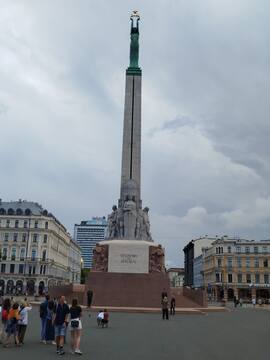
Laisvės paminklo likimas sovietmečiu
Sovietų okupacijos metu sovietų valdžia norėjo nugriauti Laisvės paminklą, tačiau legenda byloja, kad sovietų skulptorė Vera Muchina pasisakė už paminklo išsaugojimą, pabrėždama jo meninę ir emocinę vertę Latvijos žmonėms.
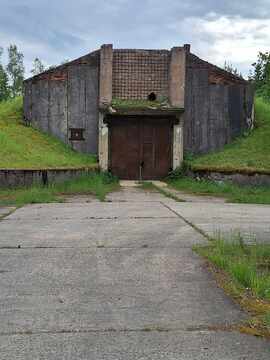
Apie slaptą branduolinės bazės angarą
Požeminėje termobranduolinių raketų bazėje Plokštinės miškuose buvo įrengtas ypatingai slaptas angaras, apie kurį vietos gyventojai iki šiol žino labai mažai ir kurio paskirtis apipinta gandais apie branduolinių raketų galvučių saugojimą.
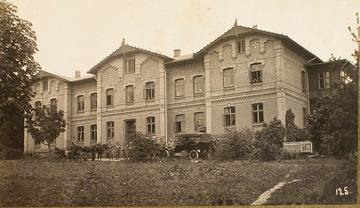
Bērzainės gimnazija – Pirmojo pasaulinio karo liudininkė
1915 m. pavasarį ir vasarą vokiečių kariuomenė okupavo Kuršą ir Žiemgalą. Kariaujančių šalių kariuomenė buvo dislokuota Dauguvos upės pakrantėse. Vidžemė tapo fronto teritorija, o Cėsys – fronto miestu, aplink kurį buvo įsikūręs carinės Rusijos armijos Šiaurės fronto 12-osios armijos štabas, kuris 1915 m. vasarą ir rudenį persikėlė į Bėrzainę netoli Cėsių (Birkenruh bei Wenden), dabartinės Cėsių Bėrzainės pradinės mokyklos pastate ir teritorijoje.
Įmūryto riterio legenda
Pasak legendos, rusų inžinierius, 1785 m. parengęs vienuolyno pastato planą, rytiniame pilies kiemo kampe rado užmūrytą rūsį.
Kurmaičių tiltas: karo vaiduoklių vieta
Mažeikių rajone, Kurmaičiuose, 1904-1905 m. pastatytas geležinkelio tiltas per Ventą tapo ne tik strategiškai svarbiu objektu karo metu, bet ir vieta, apie kurią sklando paslaptingi pasakojimai apie karių vaiduoklius ir nepaaiškinamus reiškinius.
Paskutinės kautynės prie Sedos
1944 m. spalio 7 d. prie Sedos įvyko vienos paskutinių didesnių reguliarios kariuomenės kautynių Lietuvos teritorijoje, kur Tėvynės apsaugos rinktinės savanoriai stojo į kovą su Raudonąja armija, gindami Lietuvos laisvę.

Užjaučiantys Lietuvos pakrančių apsaugos vyrai
Prieš daugiau nei 70 metų Lietuvos pakrančių apsaugos pareigūnai buvo sušaudyti už tai, kad padėjo savo kaimynams, valtimis iš Latvijos išplaukusiems pabėgėliams, pasiekti Švediją. Kai vokiečių okupacinė valdžia apie tai sužinojo, ji žiauriai...
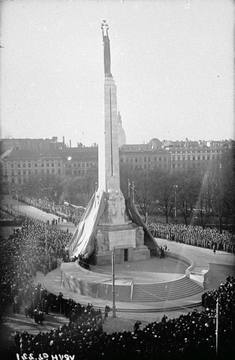
Karlio salė ir Laisvės paminklas
Pasakotojas aprašo Kārlio Zāleso, kaip asmenybės, sukūrusios garsiausius Latvijos meno kūrinius, prisiminimus. Aprašymas skirtas Zāleso atminimui 1942 m. (K. Zāleso mirties metais). Prisiminimai buvo pasirinkti taip, kad apibūdintų K. Zāleso kūrybą, remiantis autoriaus asmeninėmis savybėmis ir pasaulio suvokimu.

7-oji Siguldos pėstininkų pulko bermontiada, Didžiosios kunigaikštienės Valijos Veščūnos apdovanojimas Lāčplės karo ordinu Alūksnėje.
Po Latvijos nepriklausomybės karo didžioji seržantė Valija Veščuna už mūšius su bermontininkais prie Plānių namų 1919 m. lapkričio 19 d. buvo apdovanota Lačplėsio karo ordinu. Valija Veščuna buvo viena pirmųjų, perėjusių Lielupės upę, apšaudyta priešo.
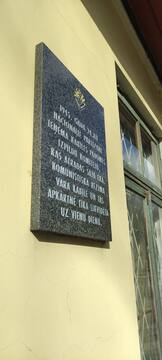
Kabyle užėmimas 1945–1946 m. sandūroje
Vienas ryškiausių pokario ginkluoto pasipriešinimo Kuržemėje apraiškų buvo Kabilės užėmimas per 1945 m. Kalėdas ir vėlesnis mūšis prie Āpuzniekių namų 1946 m. sausio 1 d.
Paskutinis mūšis Užpelkių miške
1949 m. rugpjūčio 13 d. Radviliškio apskrityje, Užpelkių miške, įvyko lemtingas mūšis, kurio metu žuvo LLKS tarybos prezidiumo narys, Vasario 16-osios deklaracijos signataras Bronius Liesys-Naktis kartu su kitais Prisikėlimo apygardos partizanais.
Slīterės valstybinis rezervatas pasienio režimo zonoje
Buvusių Slīterės valstybinio rezervato darbuotojų prisiminimai apie sovietmetį.
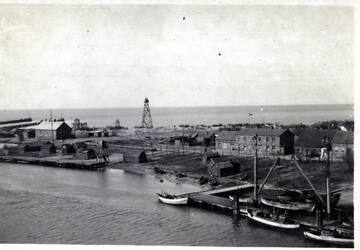
Pavilostnieki
Pavilostos gyventojai Aina Jakovļeva ir Irina Kurčanova dalijasi prisiminimais apie sovietmetį Pavilostoje.
Apie tvarkos palaikytojus rytinėje Latgalos sienoje – pasienio sargus ir jų kasdienybę laikotarpiu nuo Latvijos įkūrimo 1918 m. iki sovietų okupacijos 1940 m.
Šioje istorijoje galite sužinoti apie žmones, kurie palaikė tvarką rytinėje Latgalos sienoje – pasienio sargybinius – ir jų kasdienį gyvenimą nuo Latvijos įkūrimo 1918 m. iki sovietų okupacijos 1940 m.
10 faktų apie Tartu taikos sutarties pasirašymą
Viena ryškiausių istorijų apie Tartu taikos sutarties gimimą yra ta, kaip 1919/1920 m. žiemą jauniems kareiviams buvo įsakyta žygiuoti ratu aplink miestą. Tai tikriausiai prasidėjo, kai derybos dėl sienų nepasistūmėjo į priekį. 1919 m. 2-osios divizijos vadas pulkininkas Viktoras Puskaras įsakė Tartu moksleivių batalionui žygiuoti aplink miestą taip, kad žygis kelis kartus kirstų ir Aia (dabar Vanemuine) gatvę prie konferencijų pastato, ir Veski gatvę, kurioje buvo apsistojusi Rusijos delegacija.
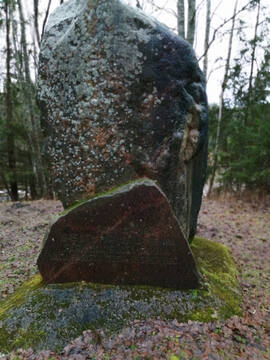
Vilio Samsono aprašymas apie „Raudonųjų strėlių“ mūšį su vokiečių policijos daliniais 1945 m. kovo 7 d.
1945 m. kovo 7 d. vokiečių kariuomenė apsupo ir bandė sunaikinti „Raudonųjų strėlių“ partizanų stovyklą. Vilis Samsonas savo knygoje, kurią 1974 m. išleido Rygos leidykla „Zinātne“, aprašo šio mūšio eigą.
Pamirštas Livonijos pakrantė
Paskutiniai lyvių kaimai šiaurės vakarinėje Latvijos pakrantėje buvo sistemingai naikinami ir nuo 1950 m. tarybų paskelbti draudžiama zona. Tik maža saujelė šios tautos išgyveno 12 žvejų kaimų, ir šiuo metu jie išgyvena savotišką kultūrinį atgimimą.
1949 metų tremtis Valgamiečių šeimoje
1949 m. kovo 25 d. įvyko antroji didelė deportacijos banga iš Baltijos respublikų. Estijoje į Sibirą buvo ištremta beveik 21 000 žmonių (7 500 šeimų). Istorija pasakoja apie šeimą Valgos apskrityje.
Gyvenimas Kegumo pusėje Antrojo pasaulinio karo metu
Blykstelėjo prisiminimai apie dabar jau tolimus karališkuosius laikus. Vyresnei kartai tai primindavo jų pačių patirtį, o jaunesniajai kartai tai galėjo būti nuobodu.
Plk. Vlado Skorupskio atsminimai apie kovas su gen. L. Želigovskio kariuomene
Plk. V. Skorupskio prisiminimuose perteikiama
1920 m. rudenį vykusių kovų su Lenkijos kariuomene patirtis akcentuojant Lietuvos kariuomenės pergalę prie Širvintų ir Giedraičių.
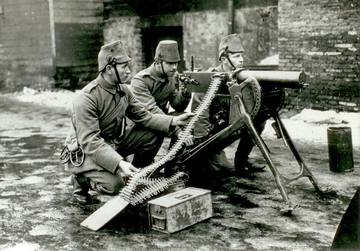
Apie suomių jėgerius Latvijoje
Suomijos jėgerių istorija įdomi, nes ji itin panaši į Latvijos kareivių likimą Pirmajame pasauliniame kare ir jų didelę svarbą kuriant nacionalinę valstybę. Suomiams Pirmasis pasaulinis karas taip pat buvo galimybė padėti pamatus Suomijos nepriklausomybei ir sukurti savo armiją. Šaltinyje aprašomas įvykis, kai Latvijoje atidengiamas paminklas Suomijos jėgeriams.
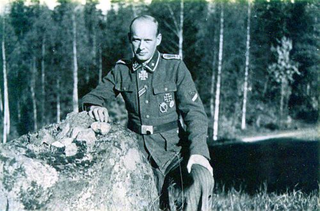
Alfredas Riekštinas - Riterio kryžiaus kavalierius
1945 metų pradžioje Kuršo tvirtovėje vis dar vyko įnirtingi mūšiai, kur latviai kovojo vokiečių armijos gretose. Vienas iš jų buvo Alfrēdsas Riekstiņšas 19-ojoje divizijoje. Už drąsą Riekstiņšas buvo apdovanotas Riterio kryžiumi ir įteiktas Remtės pilyje. Netrukus prieš kapituliaciją jis tapo leitenantu.
Spilvės sraigtasparnių bazės prisiminimai
Sovietmečiu Spilvės oro uosto pietvakarinėje dalyje buvo sraigtasparnių bazė. Ją buvo galima aiškiai matyti nuo netoliese esančių Kleistų miško kopų ir Rygos–Bolderajos geležinkelio atšakos, vedusios į Rygos lakų ir dažų gamyklą.
Karo gydytojo plk. Kenstavičiaus atsiminimai iš Lietuvos Nepriklausomybės karų
Atsiminimuose perteikiamos patirtys iš Lietuvos kariuomenės karo ligoninės veikusios pietų Lietuvoje, kautynių su Lenkijos kariuomenėje metu Suvalkijoje.
Būsimojo Lietuvos kariuomenės vado brg. gen. Stasio Raštikio atsiminimas apie Nepriklausomybės kovas
Atsiminimuose pasakojama apie įstojimo į kariuomenę, sužeidimo ir karo belaisvio patirtį. Autentiškai perteikiama sužeidimo bei gyvenimo karo stovykloje pojūtis.
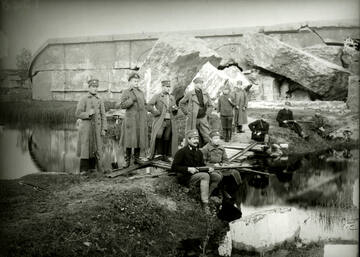
Redano mūšis 1919 m. lapkritį
Donatas Pudulis buvo Liepojos karinio uosto komendantūros seržantas, 1919 m. lapkričio 14 d. gavęs Ardėnų mūšio ordiną už drąsą ir narsą, kai, priešui užpuolus Redano fortą, perėmė komendanto kuopos vadovavimą iš mirtinai sužeisto vado leitenanto Roberto Radzinio ir greito kontratakavimo metu išvijo priešą iš forto, paimdamas 8 belaisvius ir 2 veikiančius kulkosvaidžius. Įdomus jo gyvenimas iki Liepojos mūšio. Būdamas 16 metų, 1911 m. jis savanoriškai įstojo į Sibiro šaulių pulką. 1914 m. jis dalyvavo mūšiuose su vokiečių armija Varšuvoje, Lodzėje ir kitur Lenkijos fronte, vėliau – mūšiuose su Austrijos armija. 1915 m. jis per Vladivostoką išplaukė į Prancūziją kaip Rusijos ekspedicinio korpuso dalis ir 4 mėnesius kovojo Verdune. 1917 m. pradžioje jis įstojo į Latvijos šaulių pulkus, o 1919 m. balandžio 7 d. – į Latvijos ginkluotąsias pajėgas Liepojoje.
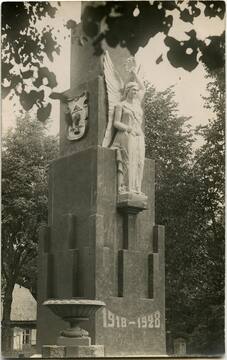
Skandalingas Laisvės paminklas
XX a. 3 deš. pabaigoje Plungėje pastatytas Laisvės paminklas sukėlė skandalą religingoje bendruomenėje dėl apnuogintos moters figūros, kuri turėjo simbolizuoti Laisvę, bet tapo nesibaigiančių ginčų objektu – tiek etikos, tiek kokybės klausimais.
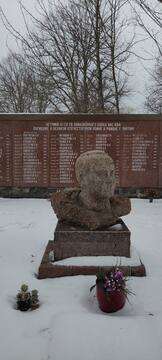
Išardyto paminklo Raudonosios armijos 67-osios šaulių divizijos vadui N. Dedajevui istorija
Į šiaurę nuo Pietinio forto yra didžiausios Liepojos kapinės – Centrinės. Pietinėje kapinių dalyje yra Raudonosios armijos kapinės, kuriose perlaidoti Liepojos apylinkėse žuvę sovietų kariai, tarp jų ir 67-osios šaulių divizijos vadas generolas majoras Nikolajus Dedajevas, vadovavęs Liepojos gynybai 1941 m. birželį.
Gyvenimas prie stribų būstinės
Pasakojama apie pokario metų situaciją Lietuvos kaime ir apsisprendimą tapti partizanu.
Mes visi buvome Nepriklausomybės karą laimėjusių tėvų sūnūs
Endelis Laulas papasakoja savo tėvo istoriją apie dalyvavimą Kõnnu mūšyje ir vos išvengimą egzekucijos.
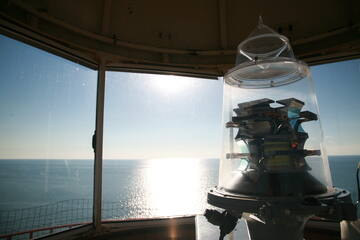
Kyšulys ir laivas „Saratovas“
Galima manyti, kad Liepoja trumpą laiką buvo Latvijos sostinė, nes Laisvės kovų metu Laikinoji vyriausybė buvo dislokuota laive „Saratov“ būtent šiame mieste. „Saratov“ po Rygos išlaisvinimo Laikinąją vyriausybę nugabeno į ją, tačiau daugelis žmonių nežino, kad tokio svarbaus mums laivo istorija baigėsi jūroje, Akmenrage.
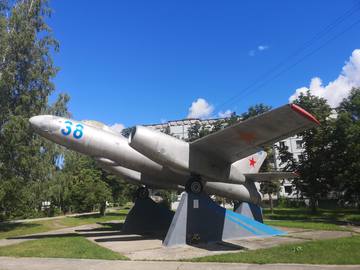
Skultės karinis bombonešis
Laikraštyje pasirodęs straipsnis vaizdžiai iliustruoja situaciją šiuolaikinėje Latvijoje, kai daugelyje vietų išsaugoti ir netgi restauruojami (dažnai vietos valdžios lėšomis) aplinkos objektai, šlovinantys sovietinę okupacinę armiją. Valdžios institucijų neryžtingumas ir valios stoka sukuria ilgalaikes, konfrontacines situacijas visuomenėje. Įvairūs paminklai, memorialai ir aplinkos objektai suvokiami ne kaip istorinės ar atminimo vietos, o kaip įrankiai, tęsiantys sovietinio okupacinio režimo ideologiją.
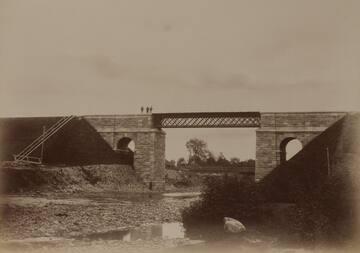
Mūšis prie tilto per Amatos upę
Cėsių mūšis yra vienas reikšmingiausių Latvijos nepriklausomybės karo etapų ir užima reikšmingą vietą ir Estijos nepriklausomybės karo istorijoje.












